
Remember reading? When one had to digest actual words on a printed page (or screen) when researching restaurants? Nowadays, attention spans are shorter than a housefly’s, and the written word is deader than Duncan Hines.
Sad but true, and a reality it is time to face. So rather than crying in our Burgundy, we thought it better to go out in a blaze of glory….and by “blaze of glory” I mean a 7,300 word salad of salacious searching for serious sustenance to share with our fellow fressers.
As an aging boomer who doesn’t have the time, talent, or energy to concoct cheese-pull /butter-dunking videos for those infected with Tik Tok brain, I’ve persevered this year because I love the chefs and the restaurants, and because I wanted to take one last spin around my beat — territory I’ve covered since Bill Clinton was in his first term.
As always, the following represent what they have for twenty-eight years: my list of the most important and delicious restaurants in Las Vegas. The places that have left a mark; who do the finest cooking at the highest levels of their craft; and to which I would take a well-traveled epicurean, should one ever give me a month to feed them the best Las Vegas has to offer.
Most of them also represent my favorite places to eat, and since the older I get, the choosier I’ve become, the intersection of “the best”, favorites, and “essentials” has now merged from a Venn diagram into a single circle. Of course I do not confine my dining to only 52 restaurants, and for that reason, there is an “honorable mention” list of places where you’ll find me and The Food Gal® popping into throughout the year.
Agree or disagree, these are all the product of judgments based upon my repeated visits over years, even decades. And remember: everything comes with the #BeingJohnCurtas guarantee: All opinions valid or your money back!
00 Pie & Pub – Mike Vakneen is a pizza savant and Chinatown is now his playground. The bar is too large (it dominates the narrow room), the chairs uncomfortable and the wine list woeful. But the wood-fired, spongy-soft/crusty-charred pies are nonpareil. And the apps alone are worth the price of admission.
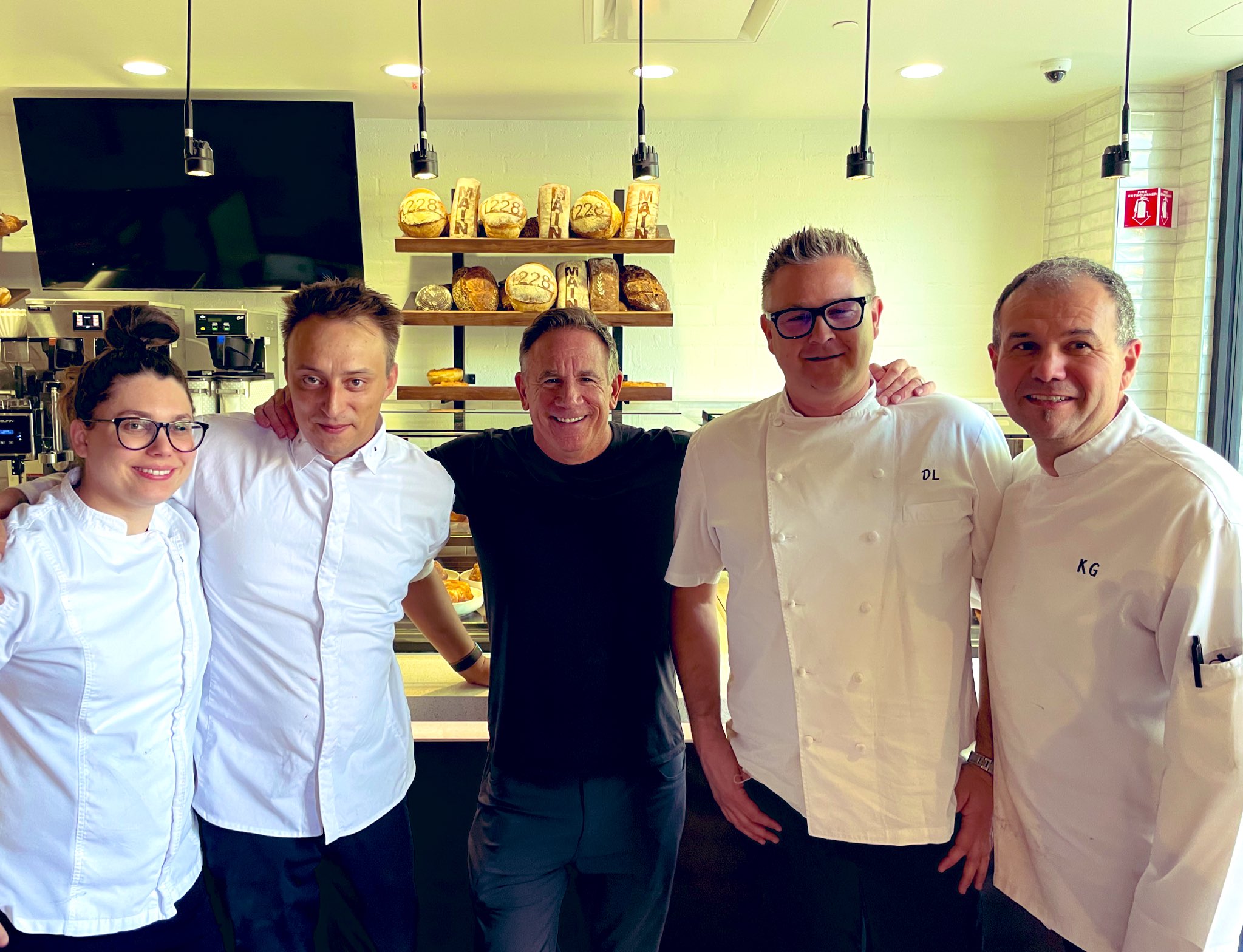
1228 Main – If Esther’s Kitchen ignited Main Street’s culinary revolution, 1228 Main legitimized it. Some have decried a celeb chef’s (Wolfgang Puck) corporation exploiting the organic, small-caliber, artisanal feel of the neighborhood, but at some point, the junk stores, muffler shops and tattoo parlors had to go, and what better replacement than a three-meal-a-day bakery/restaurant run by some of sharpest pros in the business.
Since Sébastien Polycarpe (second from left, above) was named Pastry Chef of the Year is this year’s Desert Companion Restaurant Awards, our staff thought you might enjoy the indelible prose (written by a master wordsmith) bestowing those accolades upon him:

PASTRY CHEF OF THE YEAR – SÉBASTIEN POLYCARPE
It is the fate of the pastry chef to toil in obscurity while alchemizing carbohydrates into the things that most delight the human palate. Celebrity chefs may abound, but those laminating puff pastry or kneading dough in the wee hours largely go unnoticed by customers swooning over crispy baguettes, butter-rich croissants, and impeccably decorated fruit tarts. Sébastien Polycarpe is no stranger to both worlds – having worked below decks as executive pastry chef for Caesars Palace – as well as in the spotlight of such luminaries as Alain Ducasse and Guy Savoy. A native of southwest France, he spent ten years at Caesars before joining the Wolfgang Puck galaxy of pastry and savory superstars. He doesn’t think of himself as a revolutionary, but with the opening of 1228 Main earlier this year in downtown Las Vegas, he and his pastry team have transformed the Arts District into a mecca for lovers of all things buttered, caked and baked.
Having someone with Polycarpe’s resumė pushing out world-class pain au chocolat, cheese Danish, and cherry-walnut bread daily is one thing; having him and Puck Executive Chef Kamel Guechida (a former Pastry Chef of the Year) patrolling the ovens is like having your lemon-olive oil cake and eating it too. Between them, they’ve raised the pastry bar downtown, and there’s no going back. “We couldn’t have done something like this ten years ago,” he says, “but the local food scene has really changed for the best.” A decade ago, one couldn’t imagine a veteran of the world’s greatest French restaurants rolling out mille-feuille and spackling sumptuous cakes on Main Street, but there Polycarpe is every morning, plying his tradecraft in full view of appreciative, salivating customers, anonymous no more.
8 oz Korean Steakhouse – Sometimes I think Chinatown is in danger of being overrun by conveyor belt sushi, cheap-ass pho parlors and ACYE Korean beef. 8 oz. bucks this trend and sets the standard with quality banchan and steaks worthy of any purveyor of prime. Unlike what some gwailos think: all Korean steakhouses are not created equal and 8 oz. is the exception that proves the rule.
Ada’s Food + Wine – There are only three things that can get me into the depressing, soulless confines of Tivoli Village: Al Solito Posto, the wines of Kat Thomas and the cooking of Jackson Stamper. I also like the outdoor patio here, where (unlike its sister restaurant) I can drink and dine outside eyeshot of the godforsaken Echo & Rig, and its constant stream of fading MILFs, aging Boomers and desperate bachelorettes.
Anima by Edo – The food, the wine, the service, the cocktails, the pasta, the tapas….there is nothing not to like about Anima except what a pain in the ass it is to get to (unless you live in the southwest part of the valley). Spanish food may have had its day in Vegas (both Pamplona and Jamon Jamon flamed out on west Sahara, despite paying almost nothing in rent), but both of Oscar Amador Edo’s restaurants (Anima and EDO -its smaller-bore/bigger sister) have kept the Iberian flame alive with some of the best cooking you’ll find, this side of Madrid.
Aroma Latin American Cocina – Nueva Latina in Green Valley makes about as much sense as a salsa band at a Mormon social, but what Steve Kestler is doing here is remarkable — both for the blink-and-you’ll-miss-it location, and the array of flavors he packs into his menu. He’s kept the lights on for a couple of years now, and that alone is astonishing.
Azzura Cucina – Henderson’s best Italian in a ship-snug setting, serving standards, but significantly stronger (in flavor and appearance) than anything Water Street has ever seen. This was Desert Companion’s Restaurant of the Year this year (in part for its bold move in gentrifying this moribund street), but breath is being held and fingers crossed until we see what lasting impact it might have.
Basilico Ristorante Italiano – Italian country cooking is an endlessly replicated genre, but a visit to Francisco Di Caudo’s grown-up dining room is an energizing reminder of how irresistible it can be when handled with focus and skill. Go for the slightly esoteric, perfectly made pastas, like dimpled foglie d’ulivo, perky malloreddus and slippery, thin-skinned plin dell’ alta langa, but don’t let it be at the expense of the olive oil-soaked focaccia, or the intensely flavored desserts and ice creams, like none other in town.
Bazaar Meat by José Andrés – I wish they’d change the menu at least a little bit, but BM still showcases some of the best beef in town, and suckling pig, and an Iberian-focused wine and cocktail program which is unbeatable. Spanish food may never supplant Italian in the hearts and stomachs of Americans, but Vegas can proudly say that it still has two of the best in our humble burg.
Bouchon – After spending weeks in France, this was our first meal upon returning. Although the oysters were a disappointment (hard to beat Ostrea edulis straight from the Cancale Basin), our meal checked most of the Gallic boxes for refined cooking, and flavor extraction. The room (going on 20 years old) has held up well and the service is always good-to-great. Everything from the roast chicken to super-focused sauces to the superb moules marinere are straight from Thomas Keller’s Left Bank playbook. It’s also the only place in Vegas where you can routinely find boudin blanc (above) and sweetbreads on the menu. Unlike its competition (Mon Ami Gabi and Brasserie Bardot) they actually offer seasonal specials here, and you don’t have to fight for a table with the slack-jawed cargo shorts crowd.
Brezza – They don’t call it an Italian steakhouse but that’s exactly what it is. Non-beef eaters will find plenty to like, too, including gutsy pastas, inventive apps, and a dream of an Italian wine list. All overseen by award-winning chef Nicole Brisson at prices which aren’t the hose job you’ll find at Carbone.
B.S. Taqueria at The Sundry- The B. S. stands for “Broken Spanish” and it’s the best Mexican food we had this year. With Viva! by Ray Garcia in Resorts World a close second. Same chef, terrific tortillas, serious south of the border stuff.
Cipriani – The classiest midday repast in all of Las Vegas, with also the best service of any uber-busy, upscale restaurant you’ve ever been to. In a town not known for lunching, it remains the best see-and-be-scene power lunch spot anywhere on the Strip. I am bored to the gills with most Italians, but still eat here at least three times a month. That should tell you something.
Chengdu Taste – Zero atmosphere; incredible Szechuan food. Pro tip: go early (5:00 pm) for dinner or weekday lunch. Or be prepared to wait.
China Mama – After a fire, they relocated from one shopping center with terrible parking to another with even worse parking…and the food didn’t miss a beat. Regardless, you should persevere head straight to the “Pastry” section of the menu, where you’ll find the Steamed Juicy Pork Buns (aka xiao long bao), and Mama’s Special Pan Fried Pork Buns — as essential to a meal here as chopsticks and hot tea. Crispy duck, jumbo shrimp, and dry pepper chicken (festooned with an avalanche of them) hold their own with those dumplings, as does sliced-fish with pickled mustard. Other menu items – ranging from the simple (cucumber salad with mashed garlic, to the sublime “Awesome Meatball in Clay Pot” – are by turns gutsy and refined: all of them bursting with eastern Chinese pungency, not Americanized blandness. China Mama did for Chinese food what Raku did for Japanese — raise the bar and bring in line with what the better, specialized purveyors of these cuisines are doing in southern California.There’s no turning back, and the days of gloppy egg foo yung are deader than Mao Tse Tung.
CUT – In a category with lots of serious competition, this place is a cut above (sorry) – mainly because Wolfgang Puck lets Matthew Hurley play with his food, which he does seasonally to great effect, refusing to rest on his sirloins. Nicole Erle’s desserts (above) are also a wonder of refinement not usually found in cheesecake/chocolate cake catechism of steakhouse sweets.
Delmonico – Now one of the old guard of Vegas steakhouses but still one of the best. No one does a better Bearnaise….or creamed spinach. Don’t sleep on the gumbo or barbecue shrimp, either. They may have been on the menu since day one, but they’re still the closest you can come to a legitimate taste of N’Awlins in the High Mojave.
EDO Tapas & Wine – What can we say about Oscar Amador Edo’s hidden gem that we haven’t said a hundred times by now: the best, most inventive Spanish in Vegas. Blink and you’ll miss it amongst the lineup of karaoke bars and noodle parlors pinched into a narrow space in an overwhelmed-yet-underwhelming strip mall. But the food is the best Spanish you’ll find in a space that doesn’t have José Andrés’ name attached to it.
Elia Authentic Greek Taverna – Whole fish, supple octopus, gorgeous, oregano-dusted lamb chops, oven-roasted lemon potatoes, superb tomato salad, gigante beans, and the big 4 of savory dips (tzatziki, tarama, tyrokafteri, and skordalia), all pay homage to the kind of food that Greeks take for granted — be it at home or in the neighborhood taverna. The all-Greek wine list is well-priced, and the welcome makes you feel like you belong.
Esther’s Kitchen – The restaurant that saved Vegas. Or at least downtown Las Vegas. Until James Trees opened EK in late 2018, Main Street looked destined to become another urban failure, on par with the decade of misfires on East Fremont. But because of its success, the Arts District is now crawling with foodies and families most nights, and is now considered a target-rich environment by restaurateurs lusting to get in on the action. It’s only a matter of time before big money starts turning the area into a glorified outdoor mall, so revel in these days while you can legitimately say you had a front row seat to the progenitor that spawned a restaurant revolution.
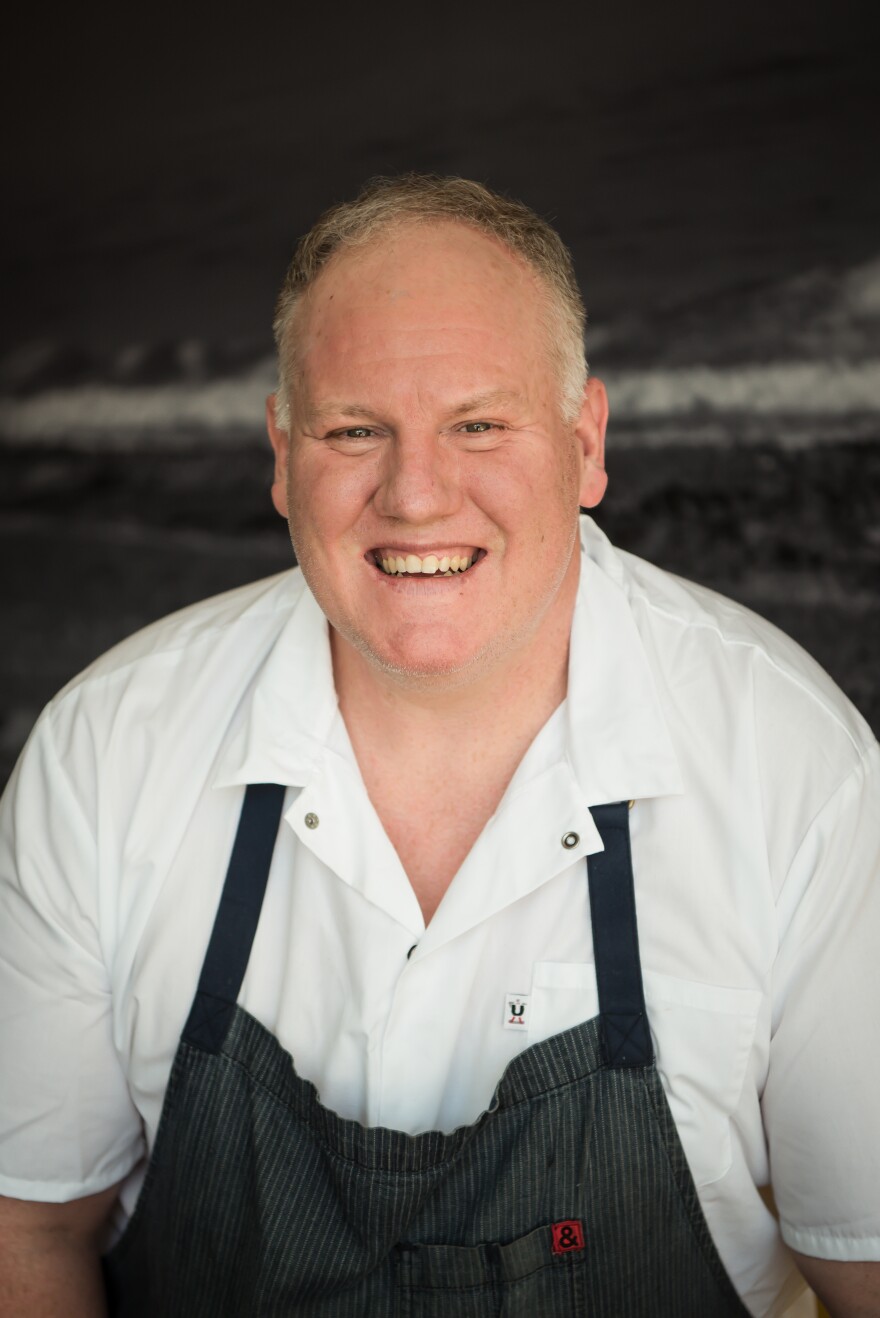
Since James Trees was named Chef of the Year in this year’s ‘s Desert Companion Restaurant Awards, our staff thought you might like to read the award-winning, deathless essay he received in recognition thereof (written by someone you know and love):
CHEF OF THE YEAR – JAMES TREES
There have been years when this category was hotly contested, but this time it was a no-brainer. No single chef has made a bigger impact on the local dining scene than James Trees. And no one is continuing to push the envelope like Las Vegas’s own prodigal chef, who returned to the fold, after decades of working in the world’s greatest kitchens, to kick-start downtown’s restaurant revolution. Not content with resting on his laurels after the success of the white-hot Esther’s Kitchen, he has continued to look for additional mountains to climb and, against all odds, conquered multiple challenges in the past few years, setting a new standard for excellence in the process.
Coming on the heels of Esther’s triumph (surviving, even thriving through Covid), many thought him foolish for taking his talents to Tivoli Village. But Al Solito Posto single-handedly resuscitated the dining scene in a shopping center previously known more for restaurant roulette than a proper cacio e pepe. Neck and neck with ASP’s accomplishments has been the resurgence of Ada’s Food & Wine – mere steps away, and an underrated restaurant in its own right — one oenophiles have taken to like a fat cat to a California cab. If these weren’t enough to keep him busy, his plate is also full with plans to open two new places in the Arts District (one a French bistro, the other concept still on the drawing boards, but certain to reset the paradigm for what it means to dine downtown). And did we mention all of this is taking place as Esther’s gets ready to move into bigger/better digs just a few feet from its current location?
Taken together, you have not only Las Vegas’s busiest but also its most influential chef. Not bad for a kid who started out as a teenager working in the Mirage Hotel before heading to the Culinary Institute of America, and then honing his craft under the tutelage of everyone from Heston Blumenthal to Michael Mina. In an industry fraught with failure, Trees stands as a testament to moving through the ranks until you have the chance to do things your way, and then making the most of it.
Estiatorio Milos – You’ll pay through the nose, but you’ll also taste the freshest fish (and best Greek food) Las Vegas has to offer. Bargain hunters go for the lunch special, which still ain’t cheap ($30), but a far sight from a a five-pound, $400 Fagri, we recently landed, which, to be fair, fed six.
Ferraro’s Ristorante – As long as Gino Ferraro is still pouring wine from his excellent, all-Italian lista des vini, Ferraro’s (the godfather of Vegas’s upscale Italians – since 1985) will be an essential stop on any gastronomic tour.
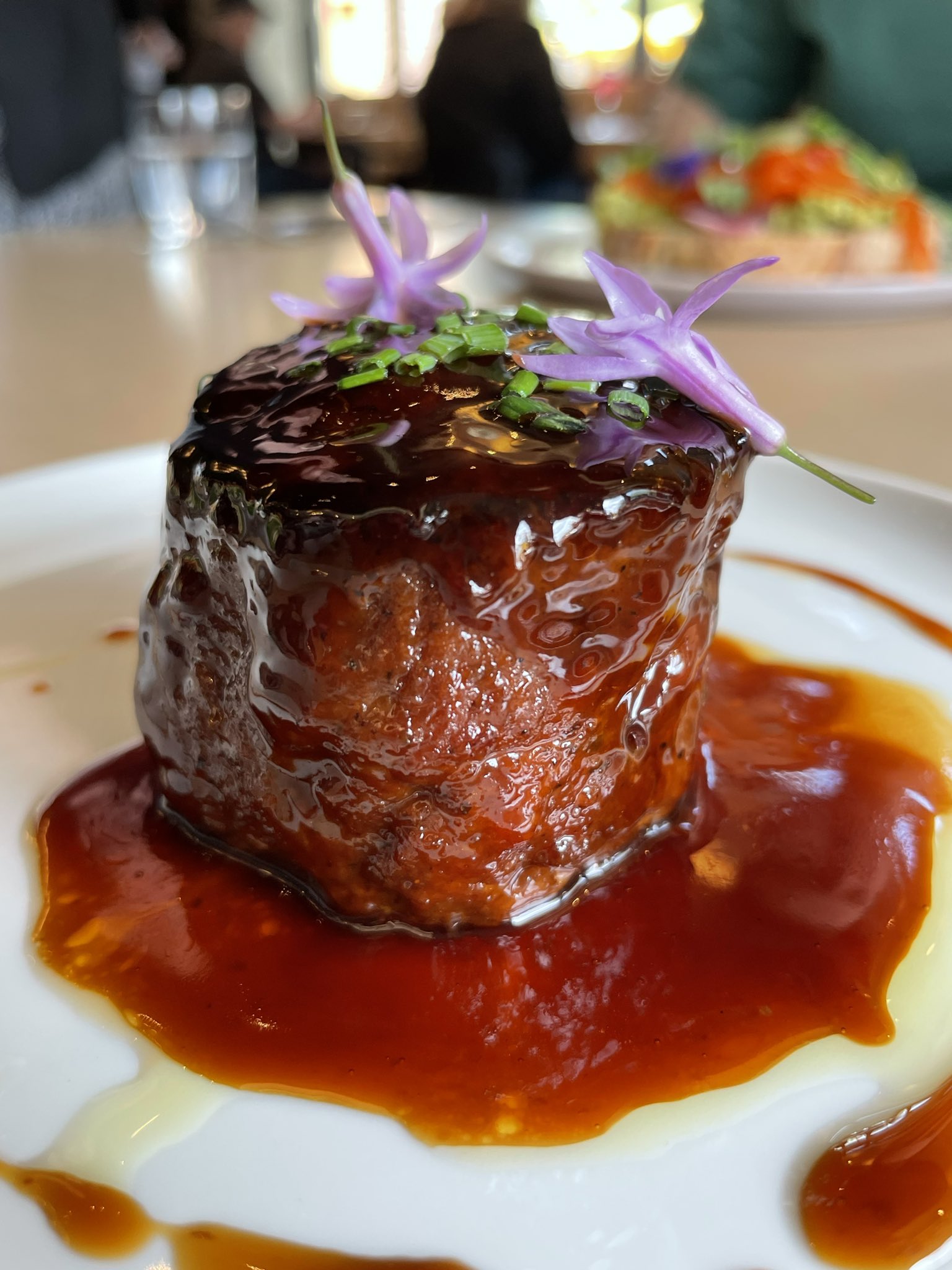
Fine Company by Roy Ellamar – Another home run from the Lev Group. Roy Ellamar knows breakfast like a Spaniard knows anchovies, and by the time you read this he will be open for dinner. Amidst the pre-fab mediocrity of downtown Summerlin (which is neither a town, nor down of a town, nor downtown of anything), this brightly lit spot shines like a beacon of chef-centric authenticity.
Golden Steer – An icon which came out of Covid smelling like a roast…of old school prime rib. Great steaks, béarnaise, tableside Caesars, and enough history to fill a Rat Pack museum. There are better steaks and sides to be found, but no one can match the vibe-i-est of old Vegas vibes. Haven’t been in six months, but the wine list falls woefully short of almost every other steakhouse in town. Belt down a few martinis and you won’t notice. No matter your state of sobriety, you’ll notice that scoring a table here is harder than finding an eight-ball at choir practice.
Guy Savoy – We haven’t been since Covid, when service was strained, place settings wrapped in paper, and all the restrictions gave one of our most beautiful rooms all the charm of an emergency room. Even then, the cooking was well nigh perfect and the flavors so intense they practically jumped off the plate. Anyone who poo-poos French food has never had Savoy’s trademark artichoke soup, or “peas all around” — dishes that will make you rethink your relationship with vegetables. Truth be told (HUMBLE BRAG ALERT!) we’ve now been to Guy Savoy in Paris (three times in past two years) more often than the one in Caesars Palace. But for the closest facsimile of one of the best restaurants in the world, the Vegas version will do just fine, merci beaucoup.
Harlo Steakhouse – the best off-Strip steakhouse, period. But they know it and charge accordingly. And by “charge accordingly” we mean the same wallet-bending experience you find twelve miles to the east. The whole point of Harlo was to bring Strip-quality strips to Summerlin, knowing the well-heeled set wouldn’t balk at the prices. And they haven’t, but you might.
Hiroyoshi – Anyone who eats Japanese on the Strip is a fool. All the best stuff is in the ‘burbs, and this little gem is as obscure (and excellent) as they come. Good luck getting one of the 30 seats, though. Since the pandemic, this tucked-away joint on west Charleston as been busier than the Tsukiji market on a Thursday.
Izakaya Go – Raku has better yakitori; Monta has better ramen. Kabuto and Hiroyoshi do better sushi, and Toridorkoro Raku grills better chicken, but none of them put it all together at a better price point than IG. A solid, all-purpose Japanese restaurant so varied and friendly you can visit it weekly and never get bored (and we do).
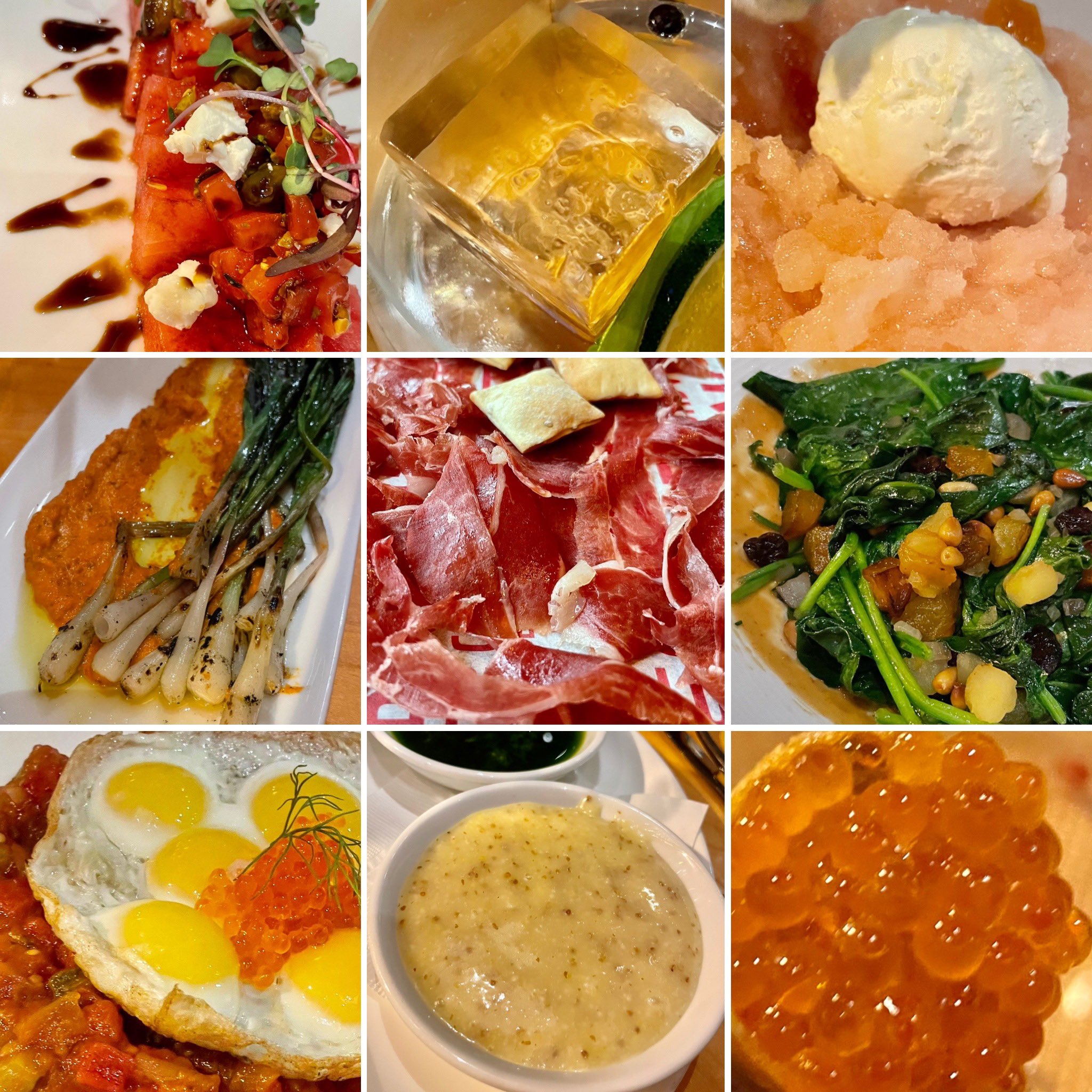
Jaleo -The paella pit alone is worth the price of admission. On it lies a rectangular grill, fronted by several small bonfires that blaze away underneath pans the size of a manhole cover. In those pans are the purest, smokiest expression of Spain’s most iconic one-dish meal. If you’re the sort who gets excited by these things, you can stand and watch the flames lap up the sides of steel loaded with various proteins and veggies on their way to becoming the best paella in America.You can sit at the highboy tables beside the pit, or at the cocktail bar. Or hunker down in the large, low-ceiling room at one of low-slung banquettes, and pick from a variety of gin and tonics – practically the Spanish national cocktail. Weekend evenings should be avoided — when both food and service are stressed to the max, and large parties whooping it up all around makes serious menu contemplation impossible. Whenever you go, get a G&T, pile on the paella, and by all means, fill up on tomato bread.
Also worthy if you find yourself hankering for Spanish in the Aria and don’t want to fight through a phalanx of sloe-eyed bimbos posing at a selfie wall: Julian Serrano.
Joël Robuchon – It’s funny that the older I get, and the more financially comfortable I’ve become, the less I want to spend a car payment on dinner. Maybe it’s because dinner a deux at the late great JR’s will now set you back something closer to a house payment. Even though I haven’t been in over three years, it’s still one of the greatest restaurants in the world. I’d bet my house payment on it.
Kaiseki Yuzu – So fine, so personal, so much like the sort of Noren-draped spot you’d stumble upon in a Shibuya alleyway. It is prix fixe and intensely seasonal and simply the best Japanese experience in all of southern Nevada. For a quicker, more casual meal (primarily sushi/sashimi), book one of the six seats out front and prepare to be blown away.
Lotus of Siam – I like the old one. Not the really old one (the original one in Commercial Center, closed for years now), but the second oldest one on Flamingo Road. The one in Red Rock feels like a copy of a copy — too big and corporate for our tastes. Regardless, the Riesling-heavy white wine list remains one of the best in America, and twenty four years on, the northern Thai specialties still can take your breath away and make your eyeballs sweat.
Main Street Provisions – Everything about MSP is almost perfect: the long, comfy bar, hand-crafted cocktails, warm greeting, generous service, and a menu notable for its burly finesse — flawlessly executed veg and carefully chosen proteins, all packing a punch. Owner Kim Owens cut her teeth in the steakhouse trade and knows how to keep the carnivores as happy as the finicky hipster “foodies” and clueless tourists — the types who like the idea of good food more than the reality. The wine list is gently priced and perfectly fine — for the downtown crowd if not this persnickety critic.
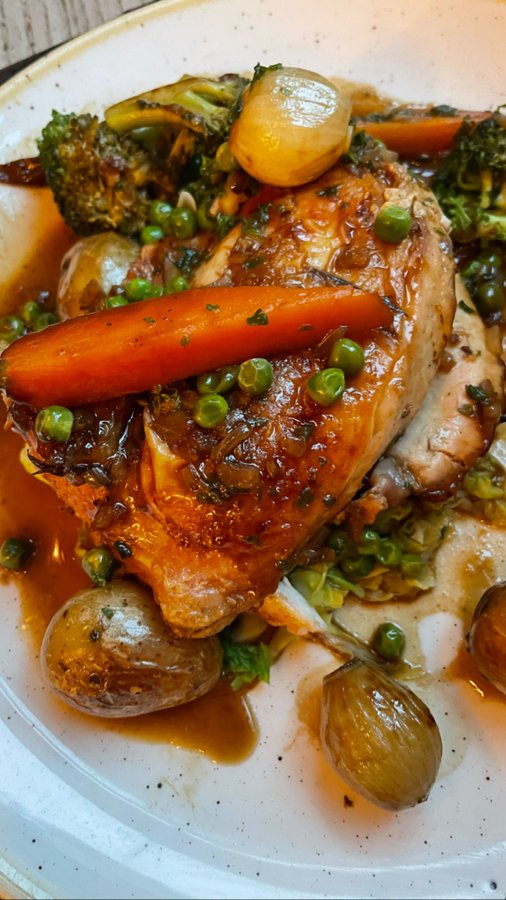 (“The test of a chef is roast chicken.” – James Beard)
(“The test of a chef is roast chicken.” – James Beard)Marché Bacchus – With Bradley Ogden at the helm, this wine bistro finally has the cuisine it deserves. Like the superb bird above.
Matteo’s Ristorante Italiano – It has neither the pedigree of Cipriani, the ambition of Vetri, nor the flamboyance of Carbone. The design is comfortable but a bit cold. But don’t let any of that deter you. Tuck yourselves into one of the heavy chairs, leave your Italian preconceptions at the door, and experience the most interesting pastas in town, as well as a culinary tour of all Italy. The all-Italian wine list is priced to sell and almost as interesting as Eduardo Perez’s cooking. And by all means, take the cannoli. It is worth the price of admission, as are all the desserts, which put the sweets at most Italians to shame.
In any normal year the above overwhelming, breathless recognition graciously bestowed would be a feather in any restaurateur’s cap, but in 2023 Matteo’s took home the coveted, often-imitated-never-duplicated Desert Companion Strip Restaurant of the Year prize, so our staff thought even more of the unforgettable sentence stylings of a certain well-fed correspondent were worth your rapt attention:
STRIP RESTAURANT OF THE YEAR – MATTEO’S
Even with an impeccable pedigree, the success of Matteo’s was hardly assured. When it first opened on New Year’s Eve 2018, it was called The Factory Kitchen – after its namesake in southern California – a name compelling but confusing to anyone who didn’t live within a mile of downtown Los Angeles. Then co-owner Matteo Ferdinandi lent his name to the proceedings, and it came storming back as a contender for the best Italian in town, with a menu as bold and ambitious as any on the Strip. Four years on, it now thrives on Restaurant Row in the Venetian/Palazzo, pouring forth a culinary tour of Italy worthy of Stanley Tucci – a journey which will open your eyes to the possibilities of real Italian food.
Guiding you from Sicily to the Cinque Terre is a team of restaurant veterans who have been setting the standard for this cuisine for decades. Chef Angelo Auriana spent years helming the kitchen at Valentino in Santa Monica when it was widely considered the finest Italian restaurant in the country. He and Ferdinandi had the good sense to tap two Las Vegas virtuosos – Eduardo Pėrez and Paulo Duran – to manage the back and front of the house. Pėrez is a pasta master who had worked his way up from Guatemalan dishwasher to running the kitchens of Spago. (You might recognize him from a national Modelo beer commercial.) Duran has been charming Las Vegas customers since his days at B & B Ristorante. Put all four of them in the same room, and you have a powerhouse of talent presenting authentic, highly refined cooking, in a casual space, which is as far from chicken Parm as Naples is from Nashville. That they do so at a reasonable price point, in comfortable space (that feels cozier than its size belies), with a nice bar, and thoughtful, gently-priced wine list, is incredible. At a time when the Strip feels ever more corporate and unfeeling, Matteo’s represents something in short supply: a restaurant where Italian aficionados can feel right at home.
Monzú – Gio Mauro is doing pizzas and pastas like no one else in Vegas. His rectangular Sicilian pies are strewn with top-shelf ingredients (and would cover a small desk), and his pastas as different from your standard Bolognese as Piacenza is from Peoria. We’re talking Carbonara with smoked goose guanciale, Paccheri alla Genovese swimming in stewed onions and braised veal, and Pisarei e faso (bread dumplings) thick with sausage and borlotti beans. One menu glance tells you this is not your mother’s Maggiano’s. Nor is it priced like a special occasion restaurant: the wine list (above) is an all-Italian dream come true, and the 32 oz. rib eye ($89) costs half of what it would on the Strip. Even with Gio’s success, this is still the great, unsung gem of local Italian ristorante.
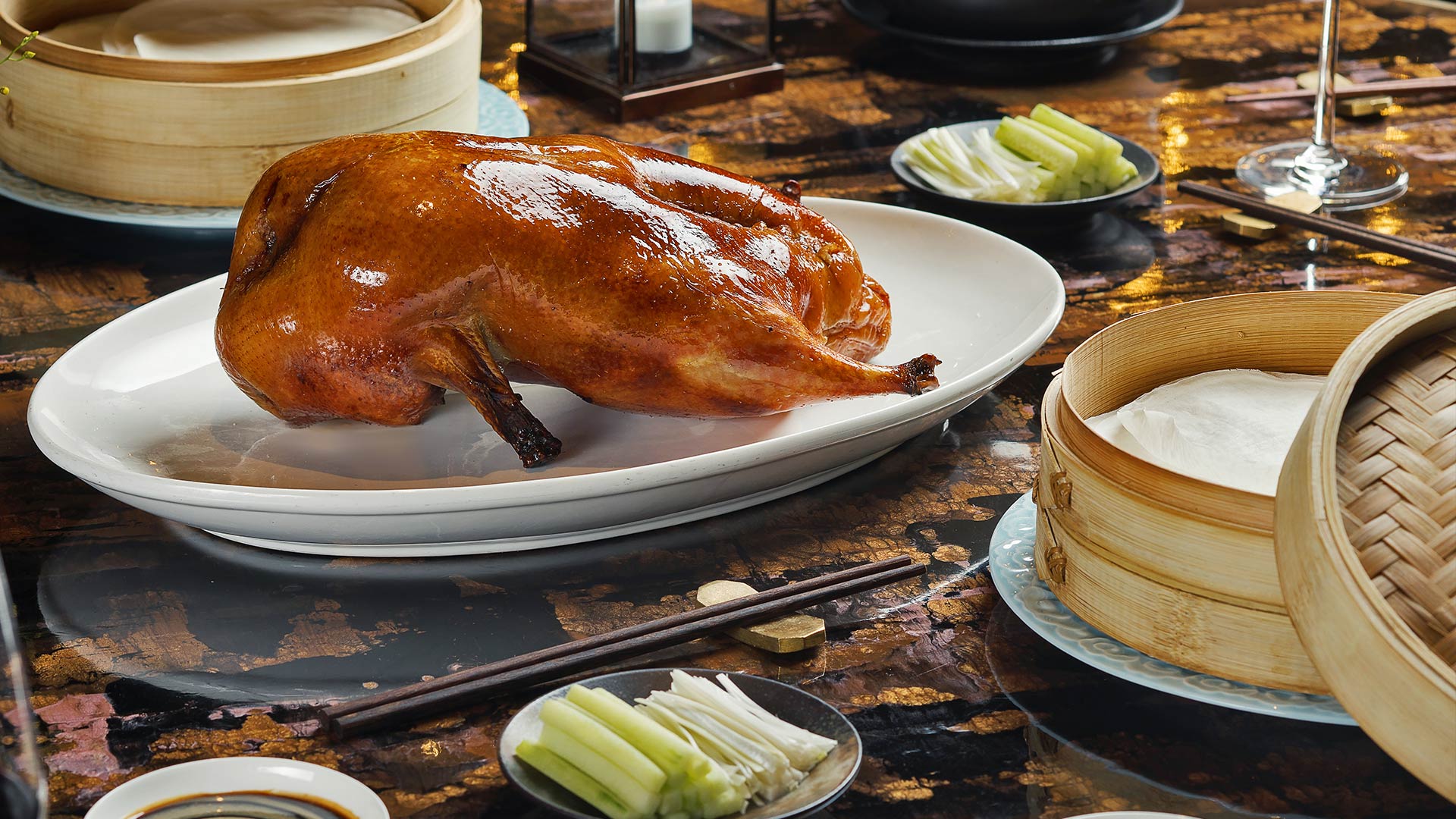
Mott 32 -As slick as Peking duck skin and just as satisfying. A huge, expensive, well-financed chain of upscale Chinese eats, with a luxurious vibe and ingredient-forward cooking calculated to appeal to purists and tourists alike. The lighting is diffused and muted, but not too much, and the young women dotting the place are as sexy and shiny as a lacquered Chinese box. Dresses are short, black and tight, and the cleavage so profound, this joint’s nickname ought to be Mott 32D. But don’t let the comeliness fool you though, because the food is the tits as well — with a bases-covering menu of everything from Cantonese dim sum to hand-pulled noodles to Peking duck. That duck is the centerpiece of every meal here and it deserves to be — its bronzed, brittle, gleaming skin, precisely flensed from succulent muscle, and having the bite-resistance of a thin potato chip, caresses perfectly-carved slices of deeply-flavored meat. Duck doesn’t get any duckier, nor Chinese any swankier.
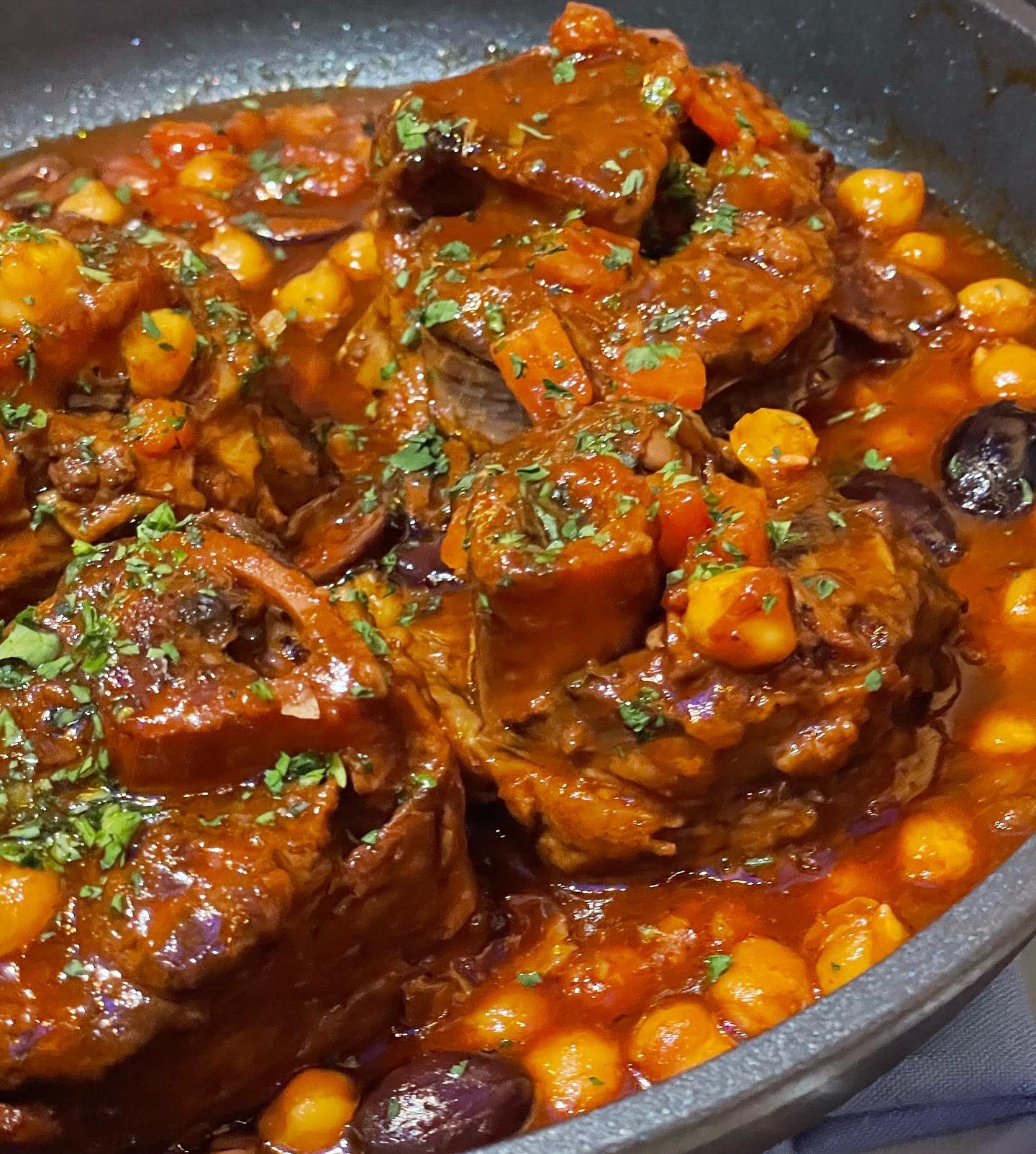
Naxos Greek Taverna – now competes with Elia as our best off-Strip Greek, simply on the strength of a more ambitious menu, bigger bucks behind it, and a slick casino location. Elia remains close to our hearts as a go-to taverna you can visit like an old friend and never tire of the conversation, but chef Mark Andelbradt (a very sad update: Chef Mark Andelbradt died of a sudden illness in early 2024) sends out some astonishing mezze, seafood and savories which its smaller competition doesn’t have the firepower to match. And you won’t find a better braised lamb shank (above) anywhere. Desert Companion’s New Restaurant of the Year 2023.
New Asian BBQ – Sometimes you don’t want fancy. Sometimes it is not about new and exciting and more about the tried and true. Chinese comfort food fills this bill better than any — with the kind of cuisine that has been satisfying immigrants and Americans since the California Gold Rush. (Fun Fact: there are more independently-owned Chinese restaurants in America than there are all the KFCs, McDonald’s and Taco Bells combined.) Step into the narrow foyer of New Asian and you enter a world of shimmering, honey-glazed pork ribs, tea-smoked chickens and lacquered ducks, hanging from hooks and signalling food both soothing and familiar. Service is perfunctory and punctual (as it is in thousands of restaurants like this around the globe), and no one lingers so turnover is fast. Solid dim sum, seven days a week and the best Peking duck deal on SMR road.
Oscar’s Steakhouse – Oscar’s hums with old school cool….right down to slugging martinis with our ex-mayor…who may be getting long in the tooth but whose steakhouse is even better than when it opened. Credit Ben Jenkin’s for bringing Oscar’s into the upper tier of beef emporiums, and for conjuring one of the great double cheeseburgers in the history of burgerdom.
Osteria Fiorella – Despite a serious upswing in competition, still one of the best Italians in the ‘burbs. Marc Vetri rarely makes a menu misstep, and Vegas is lucky to have him and his crew at two hotels (Palms and Red Rock) elevating our taste-buds with tonnarelli caci e pepe, rigatoni with sausage ragu, and the best double-cut pork chop this side of the Schuykill.
Partage – We love Partage even though we don’t go there anymore. The food is superb (if you can look past their affinity for smoking everything from the cocktails to ice cream); the wine list a French-filled winner; and the service always as smooth as Hollandaise on a halibut. But we have zero interest in “food as art” tasting menus anymore, so until Chef Yuri Szarzewski opens his more casual spot a couple of doors down, we’ll keep lauding this place and encouraging people to dine here…even if what we’re mostly craving is a simple steak frites and a profiterole.
Peter Luger – See my review here, go order the steak for two (which actually feeds three), and thank me later. Awesome burger, too, and open for lunch, which is a YUGE plus for those craving a midday slab of sirloin.
Just for strips and giggles, here’s our list of the best of the rest when it comes to premier purveyors of prime. Each is worthy in its own right, and would be the top steakhouse in town, almost anywhere else in America that isn’t New York, Chicago or California. So, even though we don’t consider them “essential” to the Vegas food scene. If you have a favorite, based upon atmosphere, service, or a particular cut or side dish, who are we to argue?
Barry’s Downtown Prime
Bavette’s
Carversteak
Gordon Ramsay Steak
Hank’s Fine Steaks
Jean-Georges Steakhouse
Ocean Prime
Prime
Strip House
Strip Steak
SW Steakhouse
Vic & Anthony’s
Raku – Just slightly older than this website, Mitsuo Endo’s intimate izakaya sparked a revolution when it opened in January, 2008 — igniting a demand for sophisticated Japanese cooking on an avenue previously known for bubble tea, mochi, and moo goo gai pan. Over the years it has expanded slightly, but lost none of its charm or refinement. It also spawned a number of competitors, none of which have managed to knock it off its crown as the Nipponese king of Spring Mountain.
Scotch 80 Prime – In my Bottom 10 (below) I write about how much better steakhouses have become in Las Vegas over the past ten years. Consider this a prime example. Marty Lopez’s food is as far from the dated steaks of THE Steakhouse as the rebooted Palms Hotel is from Circus Circus.
SoulBelly BBQ – Las Vegas is no longer the barbecue wasteland it was a decade ago, but world class ‘cue is still rarer than pulled pork at a bar mitzvah. Luckily we have SoulBelly to sooth our savage breast, with world-class brisket, hot links (above) and sides worthy of a Texas roadhouse. Also worth a taste: Wild Fig BBQ.
Shanghai Taste – China Mama is two doors down, and Xiao Long Dumpling is across the street, and the just opened (and excellent) Palette Tea Lounge also with walking distance. So why do we prefer Shanghai Taste? Because it is small, simple, brimming with buns, and loaded with the flavors of eastern China — all emanating from an open kitchen behind large glass windows adjacent to the cracker-box-sized dining room. The turnover is fast and the service never fails. A picture menu also makes navigation easy for gwailos. Like a lot of better spots up and down Chinatown, you’ll find the experience more enjoyable on weekdays, when you’re not competing with selfie-stick tourists, head-in-their-phones Asian teens, and the worst drivers on earth competing for a parking spot.
Sparrow + Wolf – Sparrow + Wolf is sleek and small (60 seats) and smells of wood smoke — all indicia of the haute-eclectic-bistro cooking that has taken over America in the past decade. Gastronomades who wander the earth searching for oases of ingenious edibles have already pitched their tents here. Intrepid gastronauts, addicted to traveling where no man has gone before, have been here since day one. Simple gastronomes who revel in chef-enhanced, high-quality ingredients will not be disappointed, either. Chef Brian Howard specializes in high-wire cooking without a net, and when he pulls it off, the results are thrilling indeed. The wine list matches the menu and the crowd, even if it doesn’t match what a wine snob might want to drink.
Sushi Hiro – the best Japanese spot not on Spring Mountain Road, which entices sushi hounds from across the valley to make the trek to Henderson. The fact that it is on godforsaken Eastern Avenue causes The Food Gal and yours truly great distress when we are craving the cleanest fish, in a decent-sized restaurant, with accommodating chefs, which doesn’t require a second mortgage or a reservation weeks in advance to enjoy. But the trip is always worth it. Just let them know how much you want to eat and to spend and be prepared to be dazzled.
Yummy Kitchen – CLOSED ;-( They don’t get much more tucked away than Yummy Kitchen, tossing its chili crab and other Singaporean-Malaysian delights inside an Asian supermarket, far across a parking lot at Spring Mountain and Decatur. The crabs are still-moving fresh, and the garlic shrimp, roti, Hainanese chicken, and Malay curries will save you plane fare to Disneyland-with-the-death-penalty.
/arc-anglerfish-arc2-prod-pmn.s3.amazonaws.com/public/6UM7RTBJTRBLDCC46VIS35M4FI.jpg)
Vetri Cucina -Even at its most basic level, Italian food is soothing. Average Italian food satisfies the way pop music does: it is catchy and forgettable. Great Italian food, like great opera, will take your breath away. Vetri, if you let it, will take your breath away. The qualifier is important, because, splendid as it is, Vetri, like opera, isn’t for everyone. There are no easy answers here, toe-tapping is kept to a minimum, and crowd-pleasing isn’t in its vocabulary. But like all great Italian food, it often accomplishes more with less. Consider the following: Clichés of all kinds have been canned. Pizzas are kaput. Soups and scampi have been scuttled. Meatballs are missing in action. Place settings are Spartan; Caesar is nowhere to be found. No giant hunks of cheese or curled ribbons of prosciutto will be ceremoniously brought to your table. The chicken Parm crowd is not welcomed.
But if you have the chops for a modern Italian food experience — like the best ristorante in Italy are putting forth these days — you’ll think you’ve died and gone to Bergamo. All of it served in a nonpareil setting — 56 floors up, overlooking the Strip – a location that puts to lie the old adage about the higher off the ground you get, the worse the food is. Your dinner here should start with foie gras pastrami with brioche and mostarda. From there, proceed to emerald green Swiss chard gnocchi with brown butter, tonnarelli grano arso (toasted wheat pasta, with seafood); and then dark, slightly gamy slices of roasted baby goat. For something lighter, dive into a squid and artichoke galette, raw fish crudo, and a pickled veggie/antipasti platter, followed by simple spaghetti, swirled with chunky San Marzano tomatoes and basil.
If you in the mood to dance with the big boys, then take down a compacted disc of veal tartare garnished with crisp sweetbreads, a sweet onion crepe (really more like a thick, sweet-savory, puck-sized tart) served with white truffle fondue, followed by either a whole roasted branzino, or a brontosaurian bistecca Fiorentina (also for two). Like the sea bass, it is enough to keep 3-4 trenchermen occupied. Mere plebes will be happy with a gorgeous stuffed guinea hen breast, thinly-sliced porchetta with tuna sauce, casoncelli alla bergamasca (Lombardy’s crinkled version of ravioli), and the cutest little bone marrow raviolini you’ve ever seen.
After that, you’ll want to navigate the wine list, which isn’t exactly chock full of bargains, but at least the prices don’t match the altitude — which means there’s plenty of drinkable stuff mere mortals can afford.
HONORABLE MENTION
Are any of these “essential”? Well, to our well-being they are. Although maybe less than iconic, most of these venues are places we couldn’t live without, i.e., they make our life in Vegas a much tastier place. Some we visit monthly; others maybe once a year. A select few we hardly ever get to (hello, Japaneiro!) but we love what they bring to the table.

Cafe Breizh
Good Pie (A serious oversight when I first published this a few days ago, now corrected with apologies to Vincent Rotolo.)
Lamoon
Legends Oyster Bar
Letty’s
Japaneiro
Joe’s Prime Steaks and Seafood
Kabuto
PublicUs
Rainbow Kitchen
Rebellion Pizza
Rincon Buenos Aires
7th & Carson
Shang Artisan Noodle
Sin Fronteras Tacos
Trattoria Nakamura-Ya
Water Grill
Win Kee HK BBQ & Noodle
Yukon Pizza
Yu-Or-Mi Sushi
Winnie and Ethel’s
And now, food fans, the one(s) you’ve been waiting for…the best of the worst…restaurants so rancid I wouldn’t eat there if the meal was comped and they were pouring DRC for free:
BOTTOM TEN
Cathédrale – The only thing interesting about this Tao Group clone of a clone of a decent restaurant is the l’accent aigu over the “e”. The decor looks like a mash-up of every bad design idea currently in vogue (Hard surfaces! Giant lamps! Ginormous/pointless chandelier-thing!), and the food either by-the-numbers, all-over-the-map (Crudo! French! Pasta!) or downright felonious (20 second crepes Suzette – don’t ask). Be forewarned: no matter when you go, the joint will be crawling with women who’ve memorized the Vanderpump Rules.
Hasalon – The whole thing reeks of cynical corporate calculation and forced fun. Every night at 8 o’clock it turns into a disco for the party-as-a-verb crowd…because, you know, everyone loves partying on schedule, don’t they? This buzzkill is proudly announced at the beginning of your meal, as if they expect everyone to be excited about choking down $47 hummus (with lamb ragu!) and farm-raised fish before the “fun” starts….EXACTLY AT 8 O’CLOCK! …which means that’s when you start shouting at each other over ear-splitting 80s rock. I didn’t think anything could make me hate Israeli-Mediterranean cooking, buy Hasalon did it in one, absurdly-priced meal. Strictly for showoffs and saps and those who think Adam Sandler is funny…but I repeat myself.
Lago – I know it’s been over a year, but I’m still recovering from PTSD (Post Traumatic Shitty Dinner syndrome) since our meal here. On the other hand, I should be grateful for the place, since it gives me somewhere to recommend when I want to visit revenge upon the chicken Parm crowd.
Michael’s – Michael’s charges $42 for this crab cake filled with more saltines than shellfish:
The Steakhouse at Circus Circus – charges $27 for a much better one:
So why are they both “Bottom 10” material? Because the crab was the only decent thing we had at Circus Circus, and you have to endure the indignity of walking through a Wal-mart of a hotel (South Pointe) to get hosed by Michael’s. (Circus Circus is more akin to a trailer park filled with snotty kids and meth heads.) Both stand as testaments to a time when tourists would endure these insults because they were the only games in town. There is no longer a reason to subject yourself to such insults unless you’re the type who enjoys gargling with razor blades or taken to the cleaners by hotels who think you’re too stupid to notice the supermarket food they’re slinging at eye-watering prices.
Majordomo (CLOSED!) – You’ve got to be one whale of an arrogant idiot to fail with a steakhouse in Las Vegas. Paging David Chang….
M.Y. Asia (CLOSED!)
The Bedford by Martha Stewart
Martin Yan’s cash-grab disaster didn’t last five months. Martha Stewart’s shameless brand-whoring will probably still be with us when they implode the Fountainebleau. But count her (and him) as the last of the breed: long past their prime “names” with enough clout to pull the last of the Baby Boomers into an eatery by promising nothing more than a familiar face fronting predictable mediocrity. Together with Chang’s flame-out, they represent the final phase of Vegas’s celeb chef obsession. Going forward, educated palates are more excited about Evan Funke bringing Mother Wolf here from SoCal, than whatever crap Guy Fieri is slinging. Look closely and you’ll see that neither the Fountainebleau nor Durango Station is hyping anything more than really good cooking from highly competent chefs — the polar opposite of Bobby Flay, Gordon Ramsay and Giada slapping their names on a door and laughing all the way to the bank. Celebrity chefs may have put Las Vegas on the map, but it’s time we put them out to pasture in favor of those who are actually at the stoves.
Vic’s – So bad we thought we were being punked. Then we looked at all the gray hairs waiting to sway to the song stylings of someone who hasn’t had a hit record since 1977 (or some Disney-fied musical), and everything made sense. Strictly for the not-quite-yet-in-a-wheelchair crowd, who’ve thrown on the good golf shirt just for the occasion.
Viet Noodle Cafe – Worst meat we’ve had on Spring Mountain Road in a decade. Cheap ingredients, poorly cooked, slung at people who are only there for the price. We normally leave small Asian purveyors alone, but this gristle-fest was a new low.
Final Thoughts…
When I started writing about food back in the Stone Age, the Monte Carlo Restaurant in the Desert Inn (above) was the ne plus ultra of Vegas dining Now we’re overloaded with French chefs from France, impeccable Italians, and Asian credentials only exceeded by the SoCal food scene. Right along side them are neighborhood joints springing forth to feed an ever-surging appetite for their cooking. With all of this in front of us, and decades of drum-thumping behind me, it’s tempting to say, “My work is done here,” and ride into the sunset.
I am not retiring, just dialing it back to a more rational level — as in 3-4 restaurants a week instead of the 8-10 I’ve averaged over the past thirty years. But my compulsion to eat myself silly all over Las Vegas is just not there anymore. And writing is hard, a real pain in the brain (ask any writer), so I’m dialing that back, too, and this will be my last Essential 52 list.
To come full circle from the beginning of this piece, writing is also not the reward it used to be. Reading these words, you’re probably among a thousand or two hungry souls. A dozen years ago, our audience was ten times that. Some months, a hundred times. Thus do I often feel like a musician who once had a much bigger stage, and now plays in local cafes to a few fans. Gratifying, but often not worth the work.
But I’ll continue to file things on these pages whenever the muse strikes.
In the meantime, follow me on “X”, Instagram, and Tik Tok (yes, I’m on Tik Tok, as absurd as that sounds, and is!), and tune into our podcast (Eat. Talk. Repeat.) weekly to get the scoops on my gastronomic gallivanting. Between them, you can expect me to stay in the game, in some manner, until they pry this keyboard from my cold, dead fingers.
Merry Christmas, Happy Hanukah, and Happy New Year, from all of us at #BeingJohnCurtas:

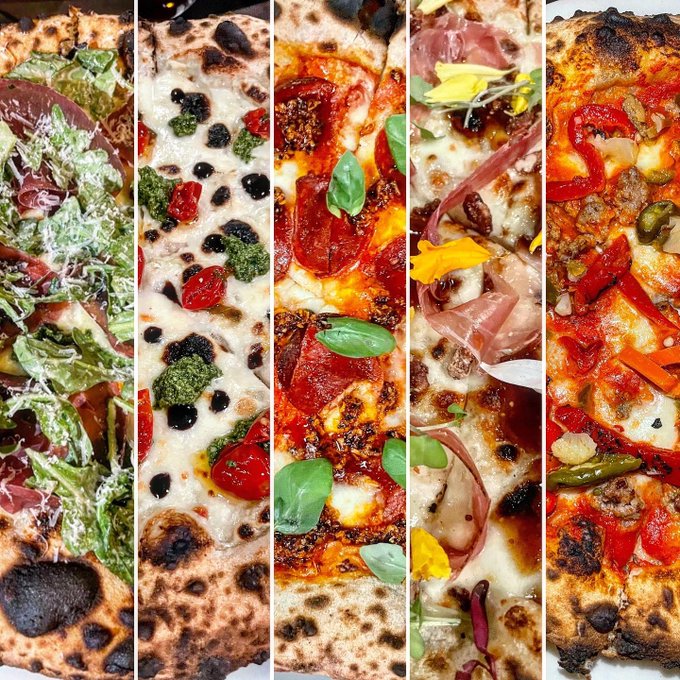
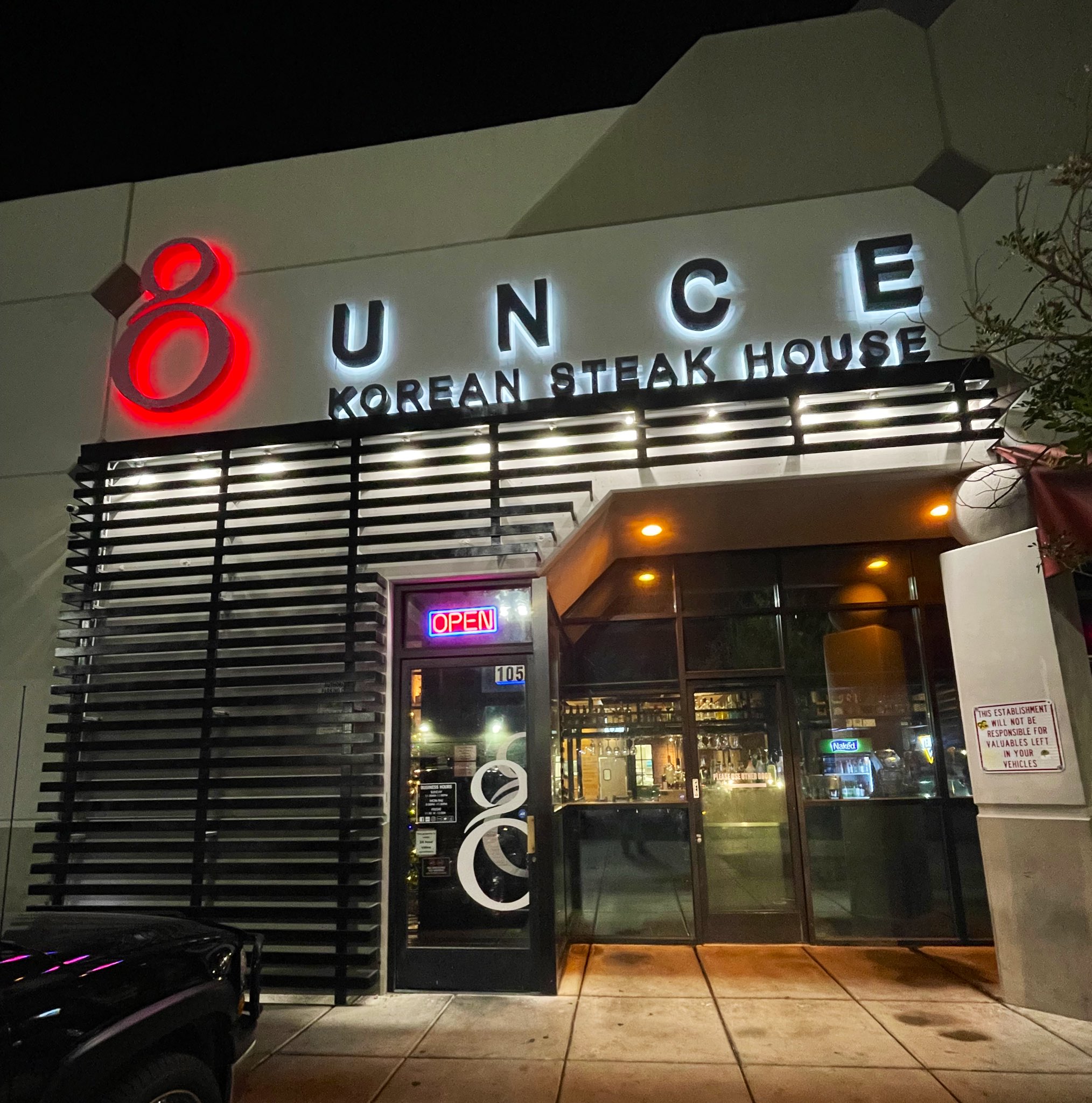
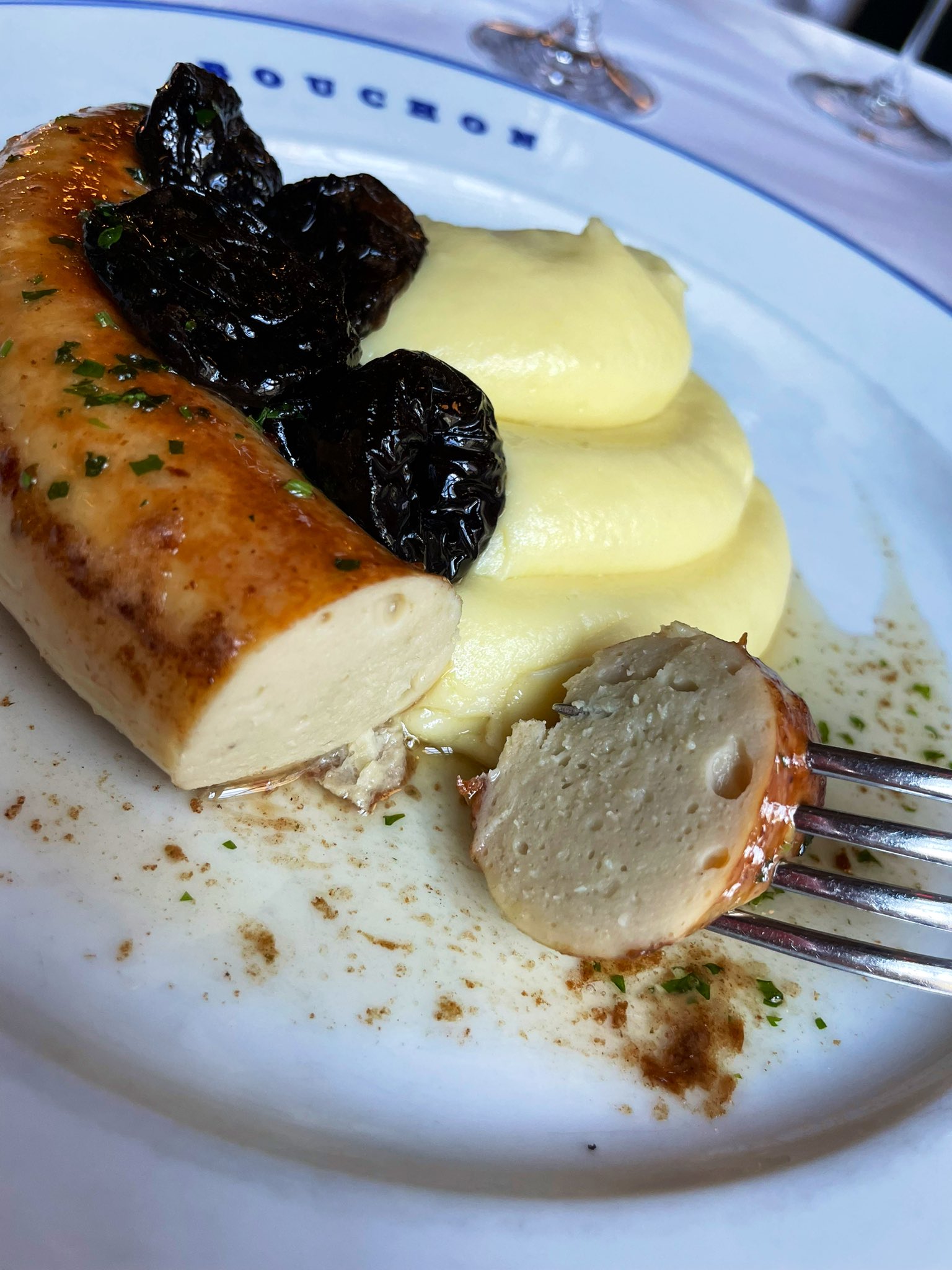
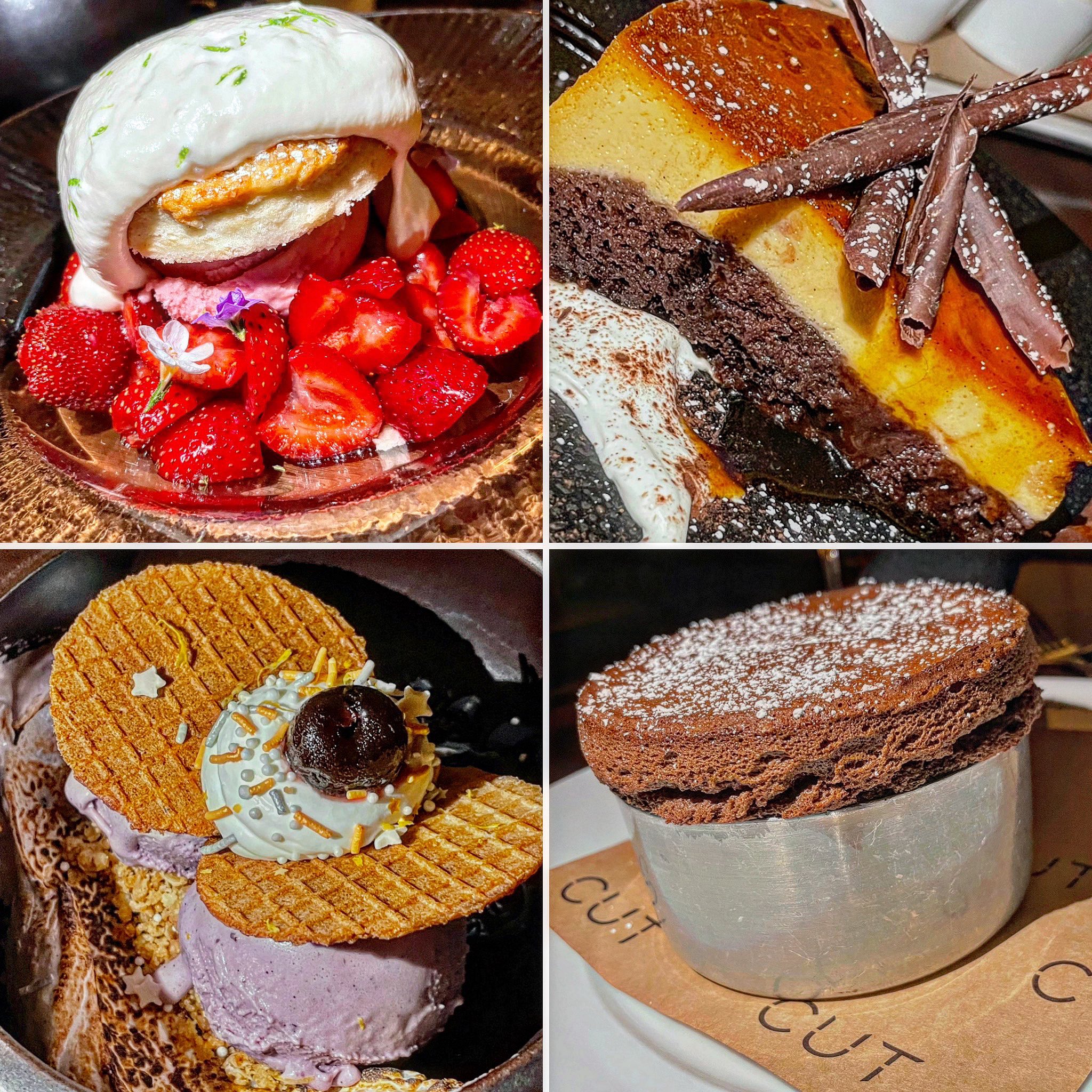
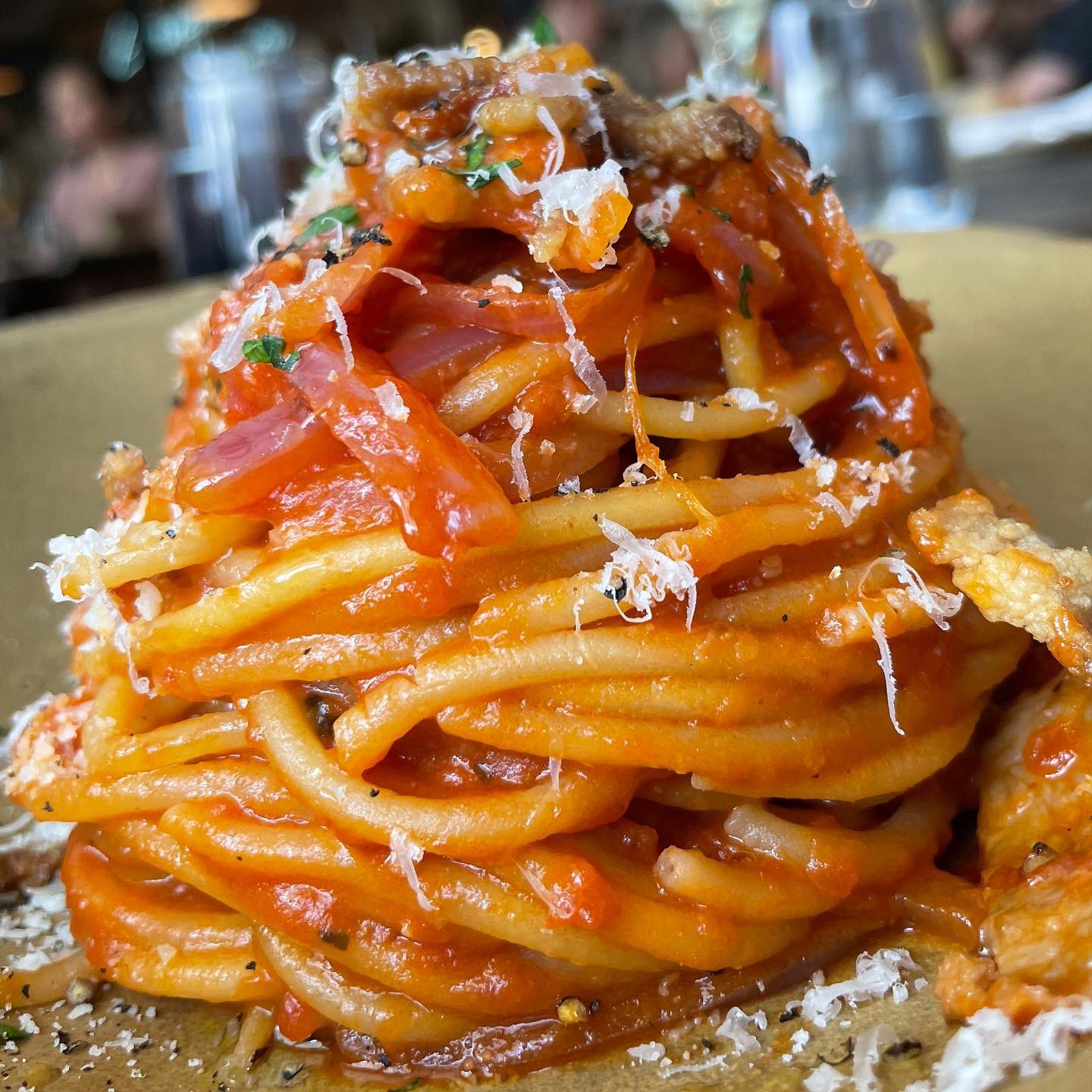
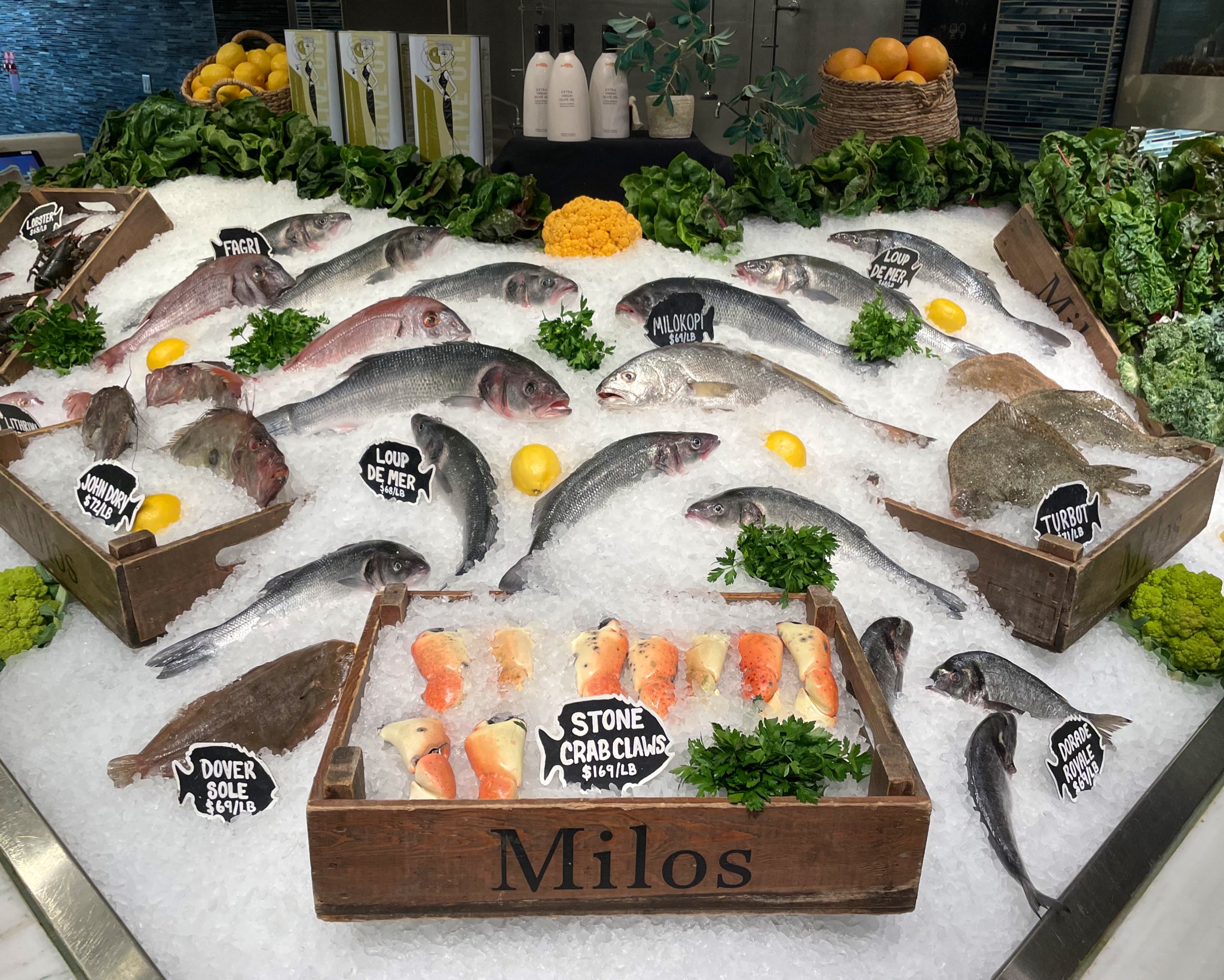
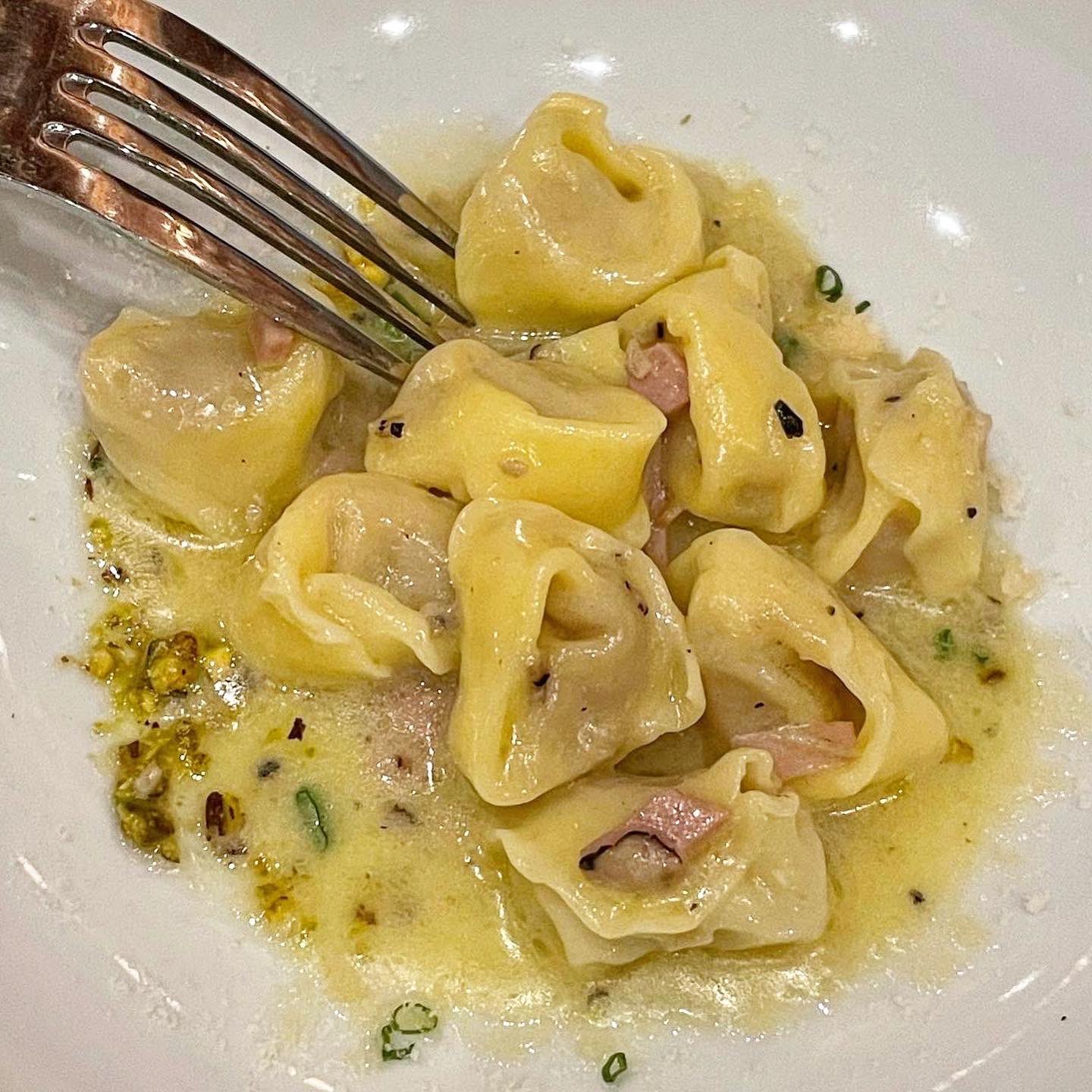

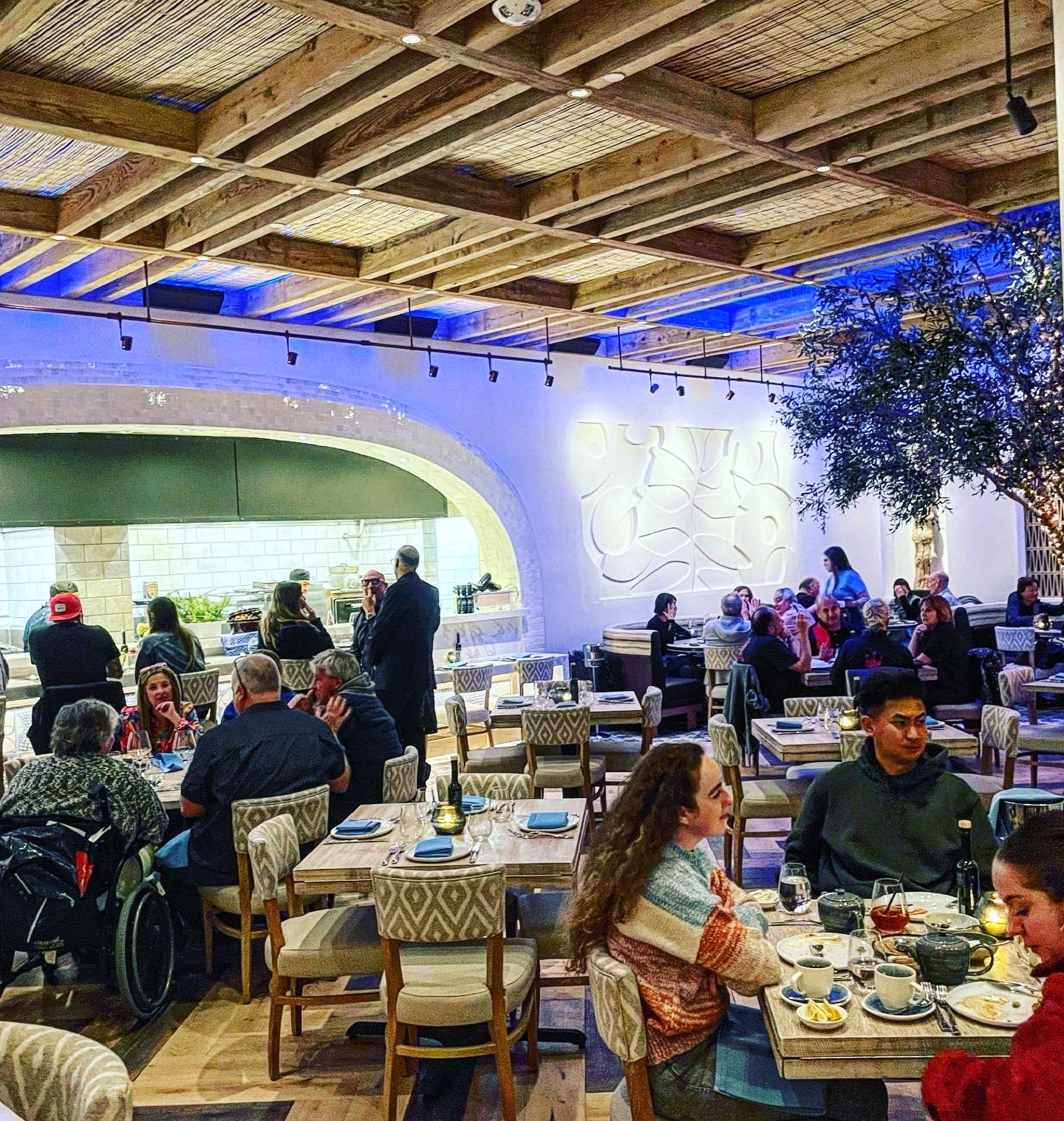
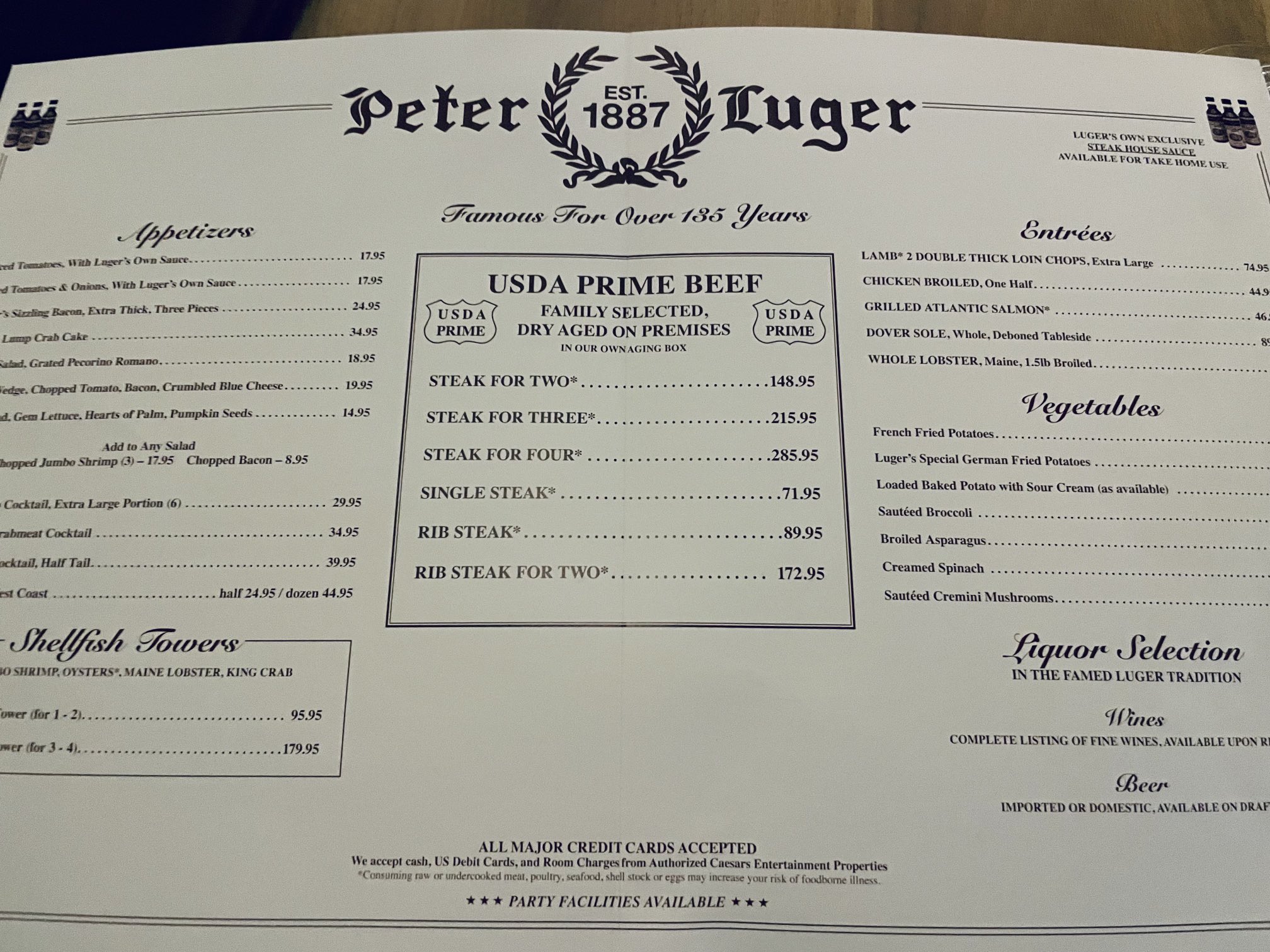
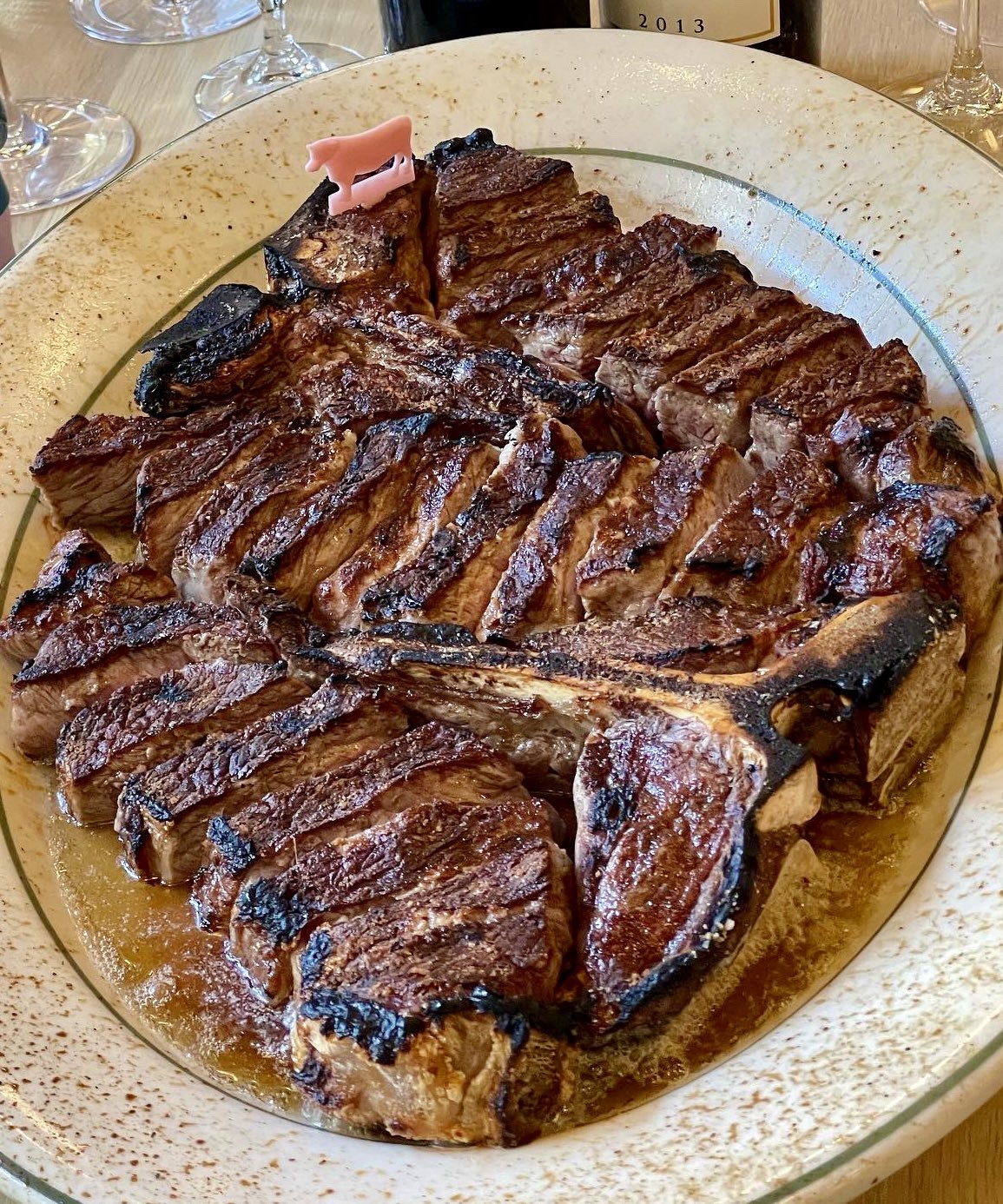


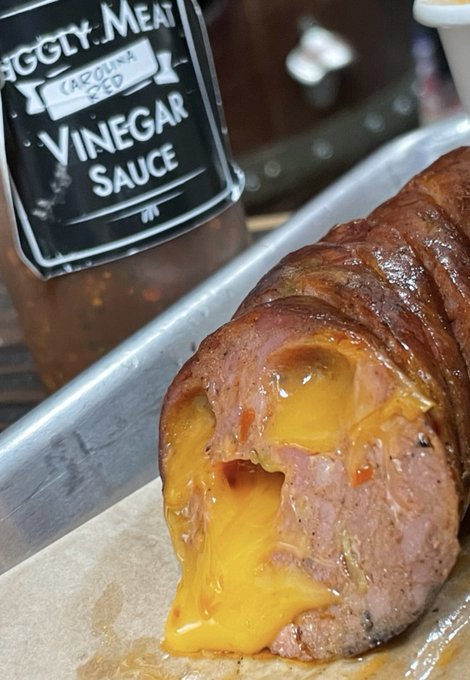
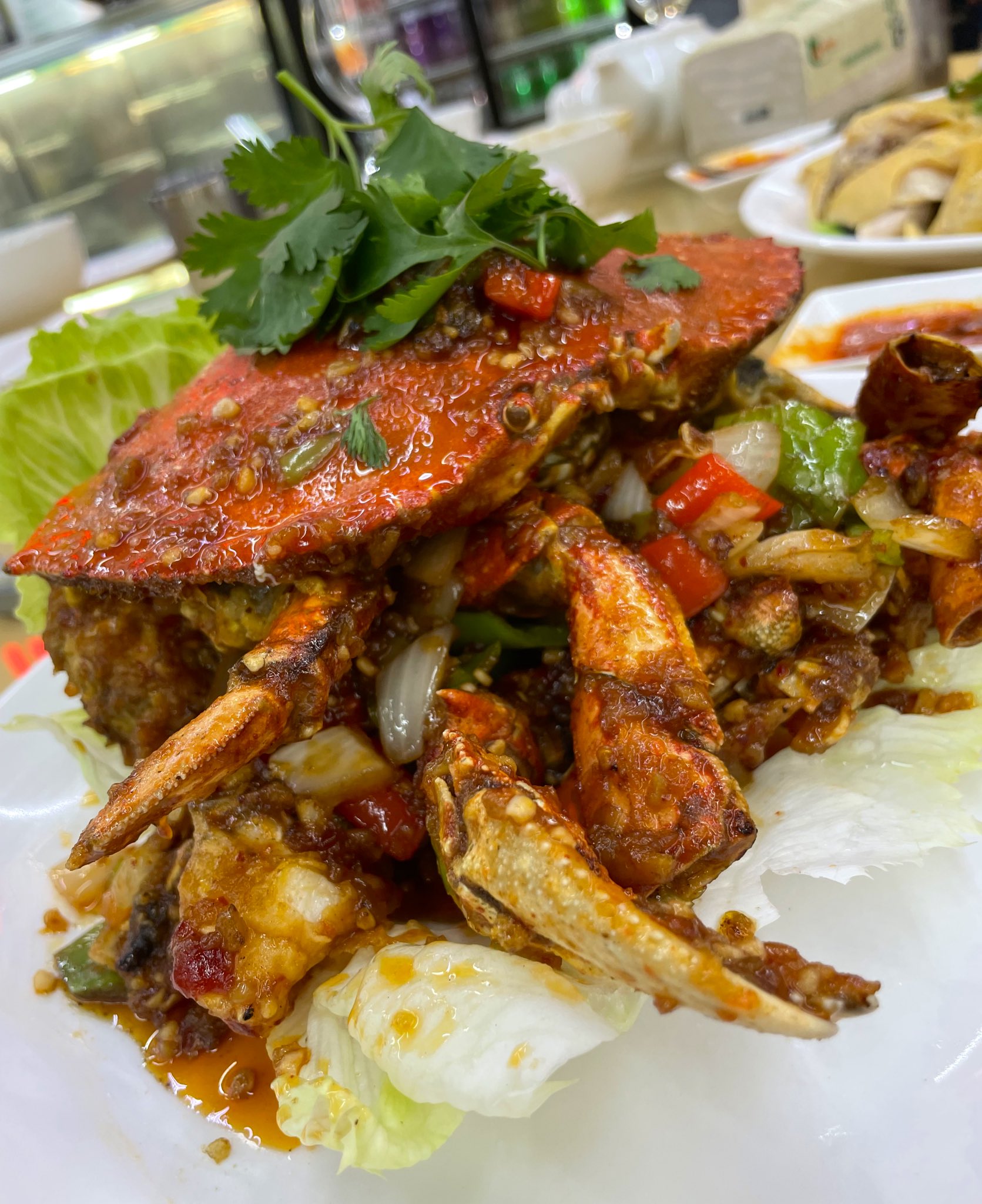
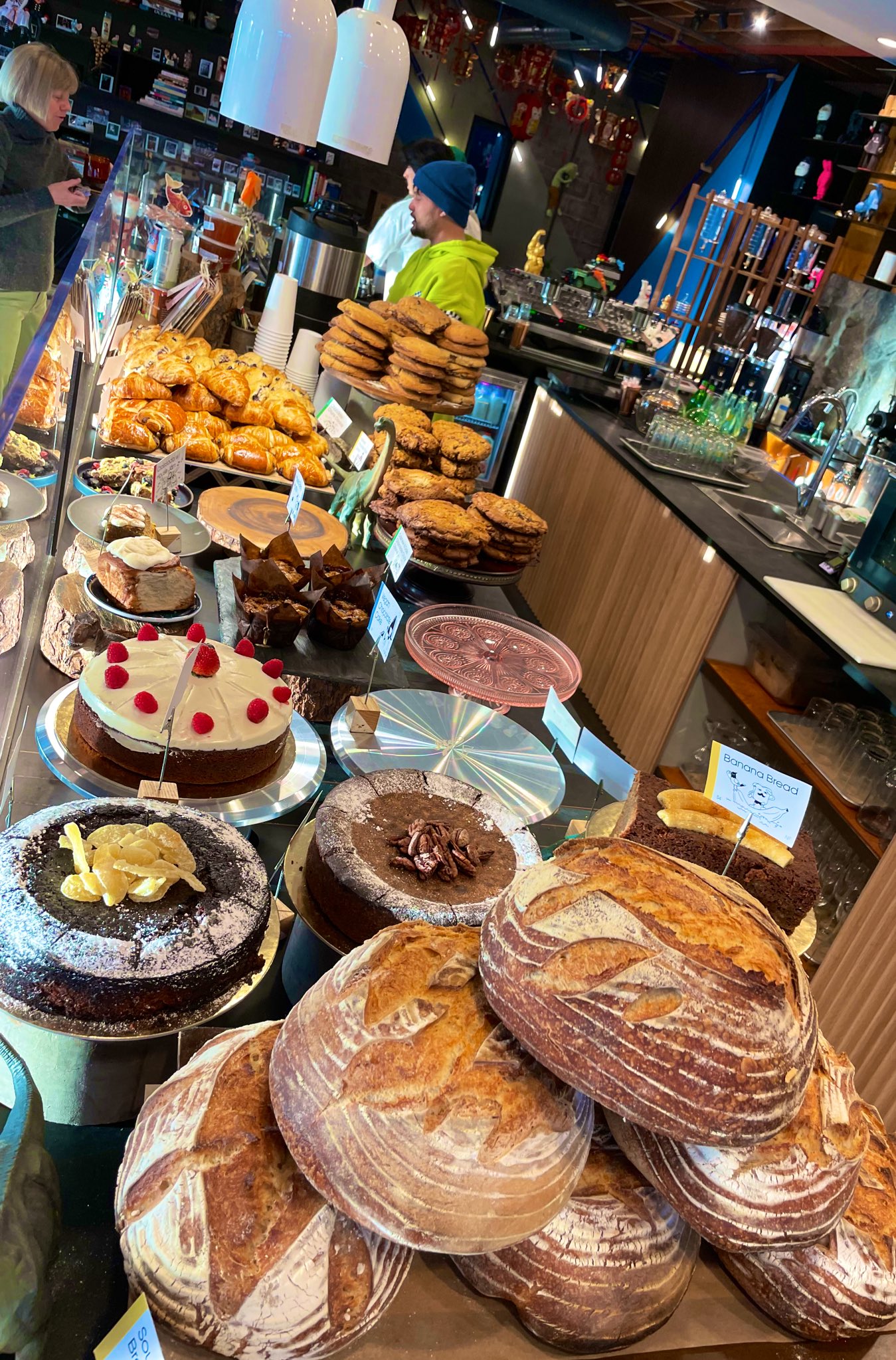
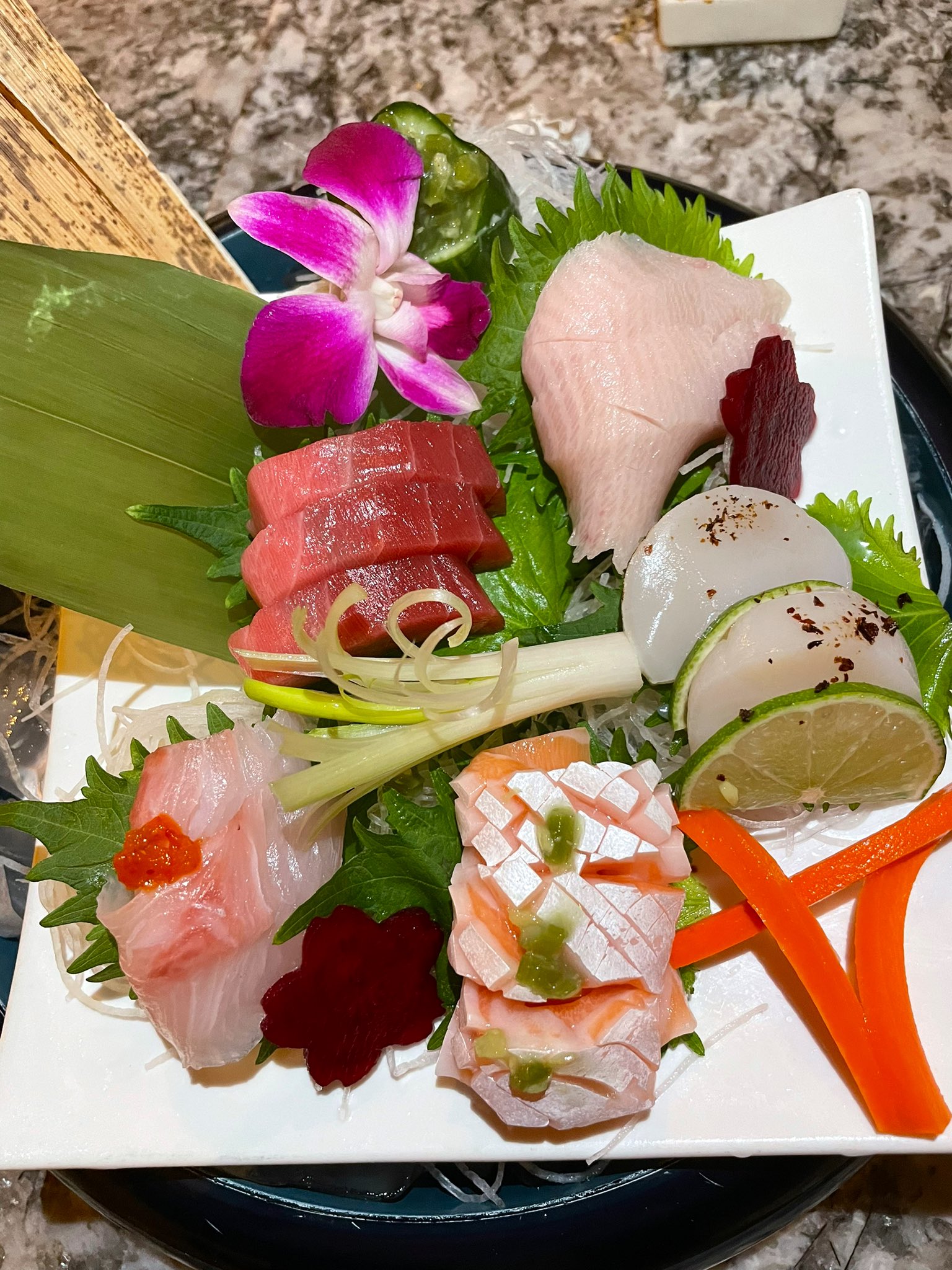
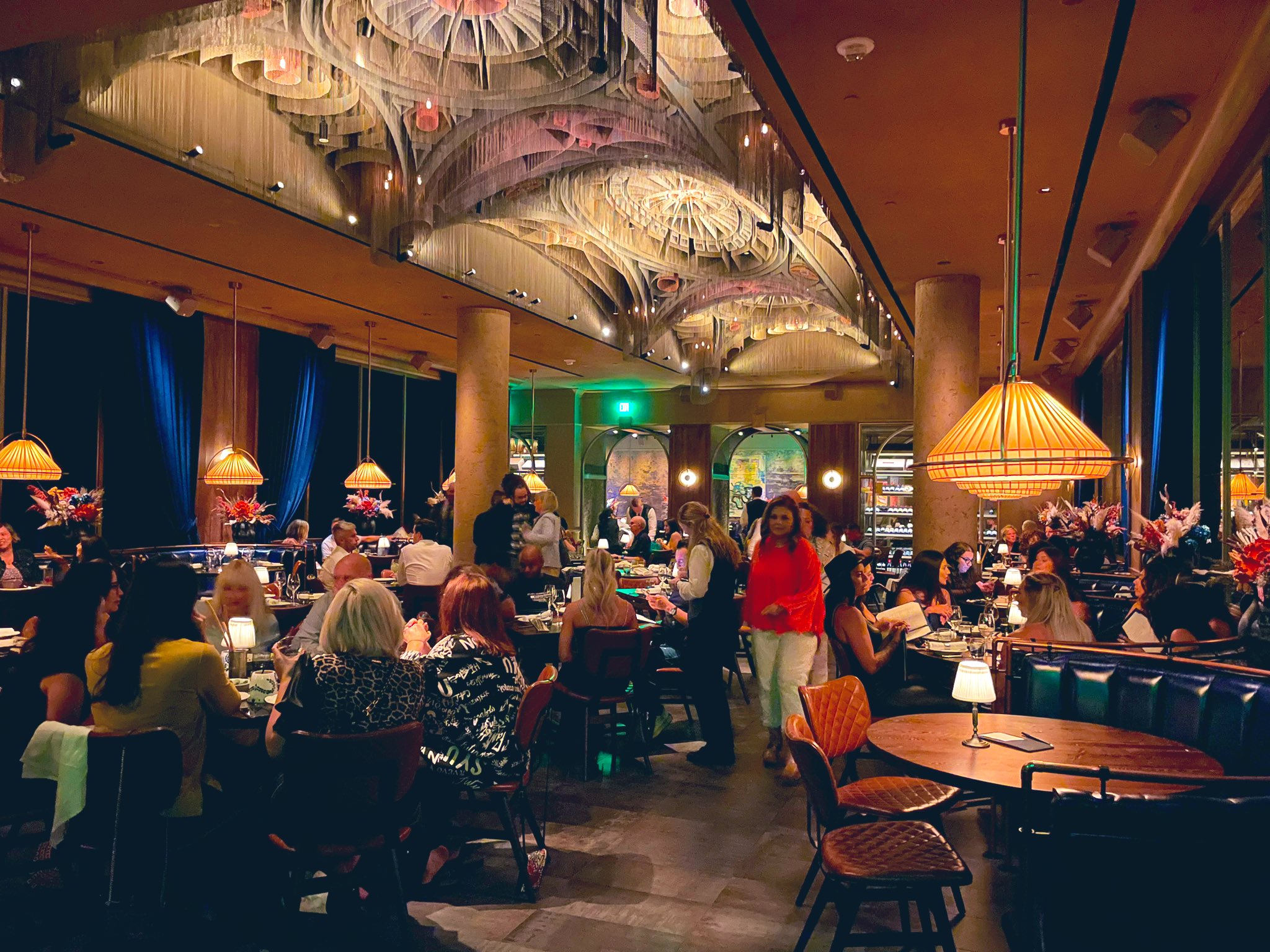
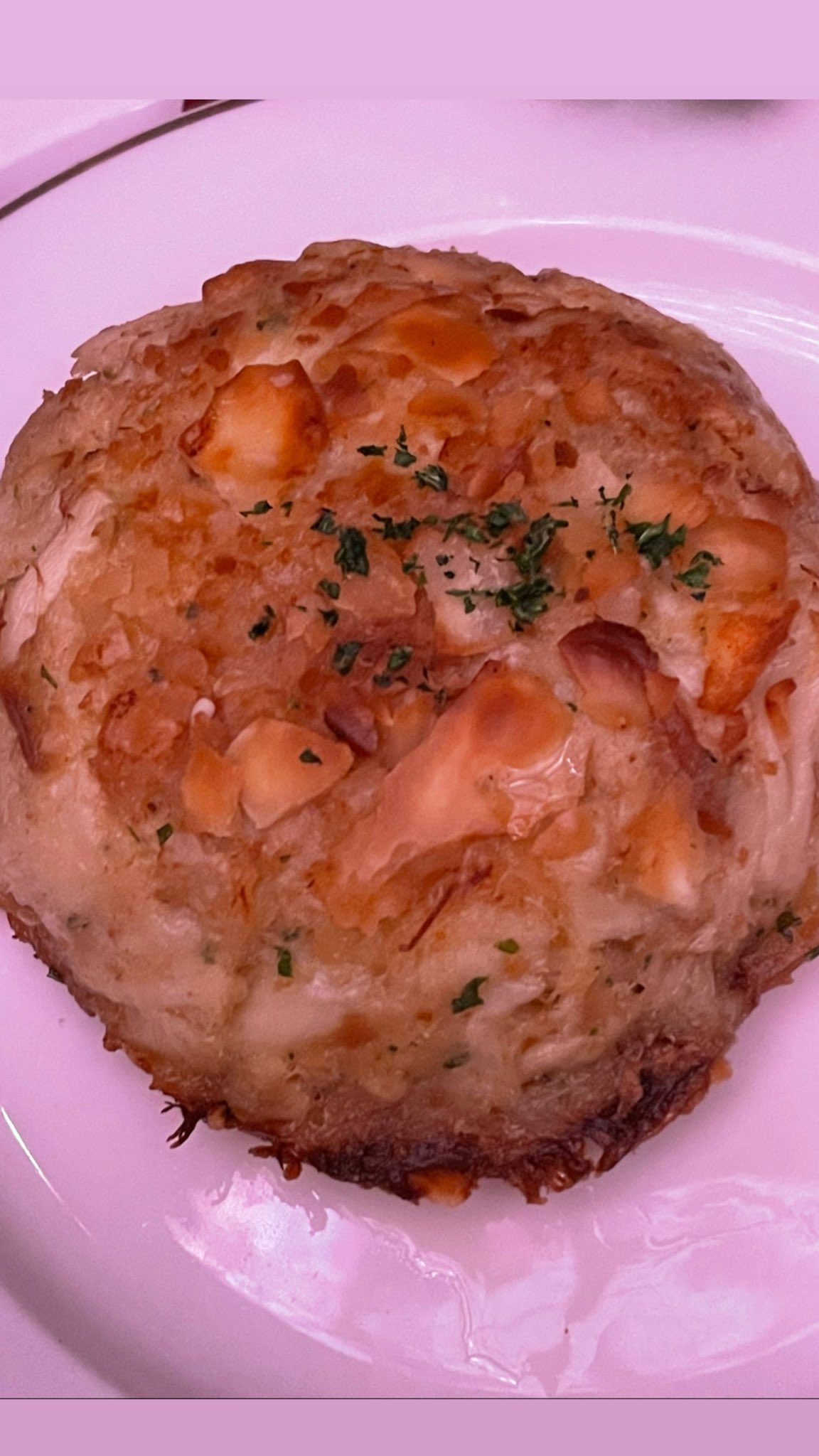

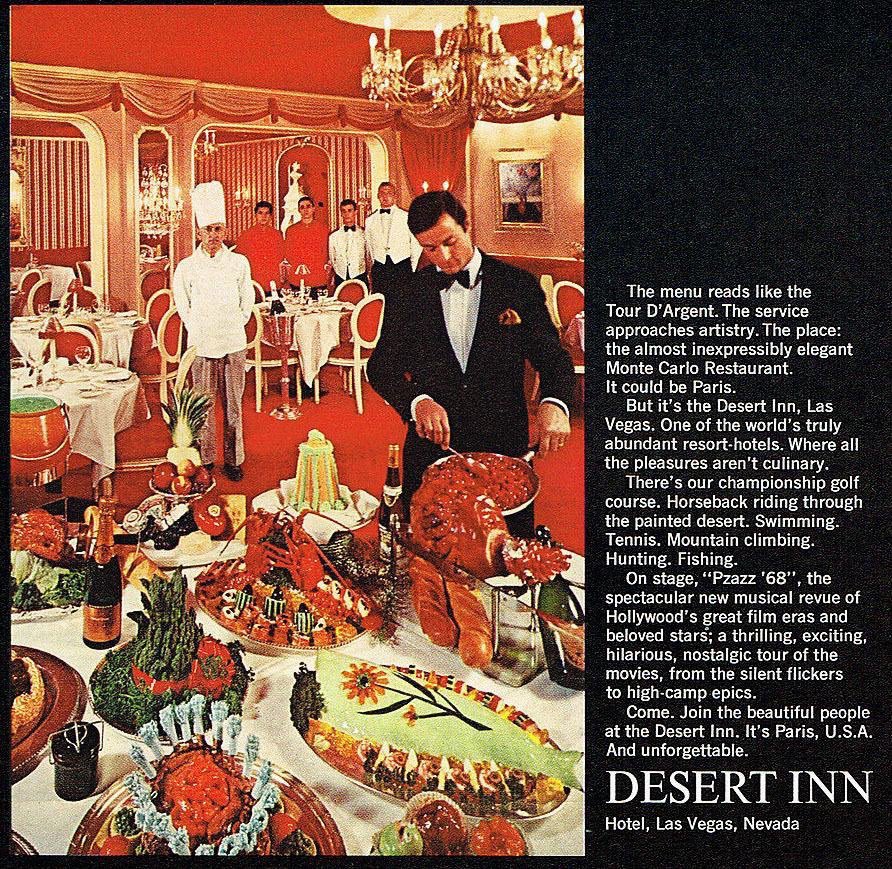
 (Costa di Mare)
(Costa di Mare)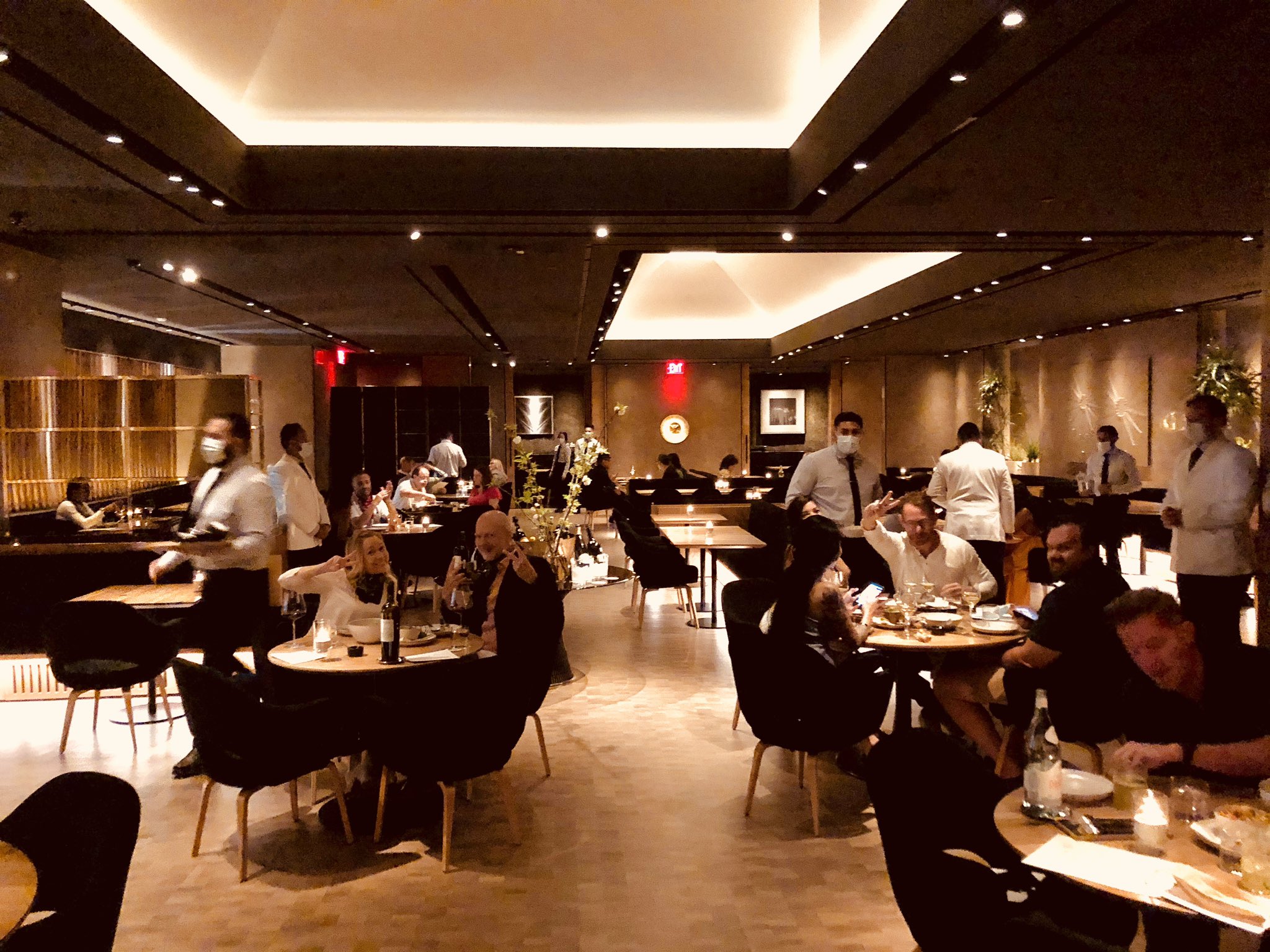 (ELIO es magnifico!)
(ELIO es magnifico!)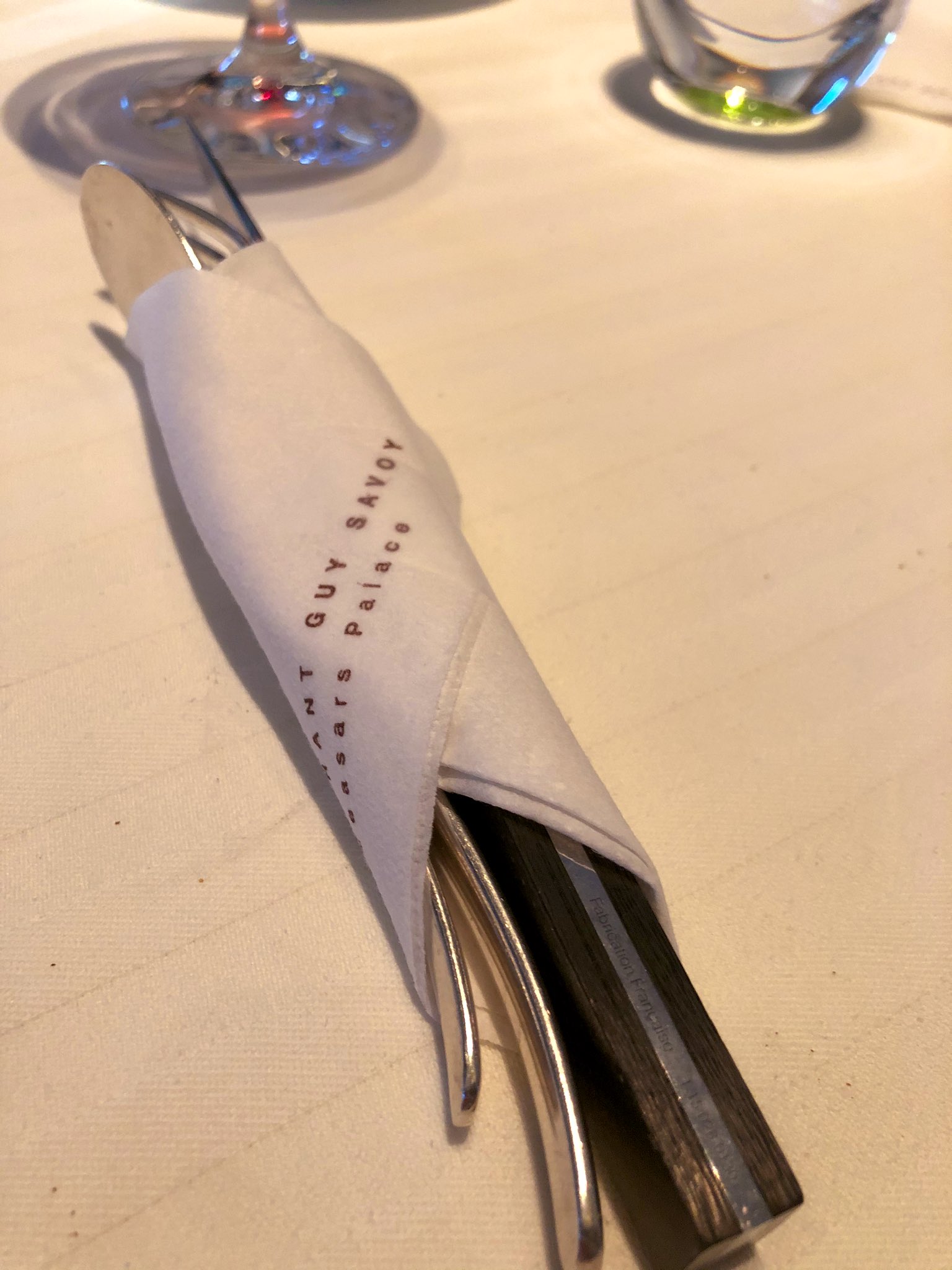
 (Pretty cheesy if you ask me)
(Pretty cheesy if you ask me)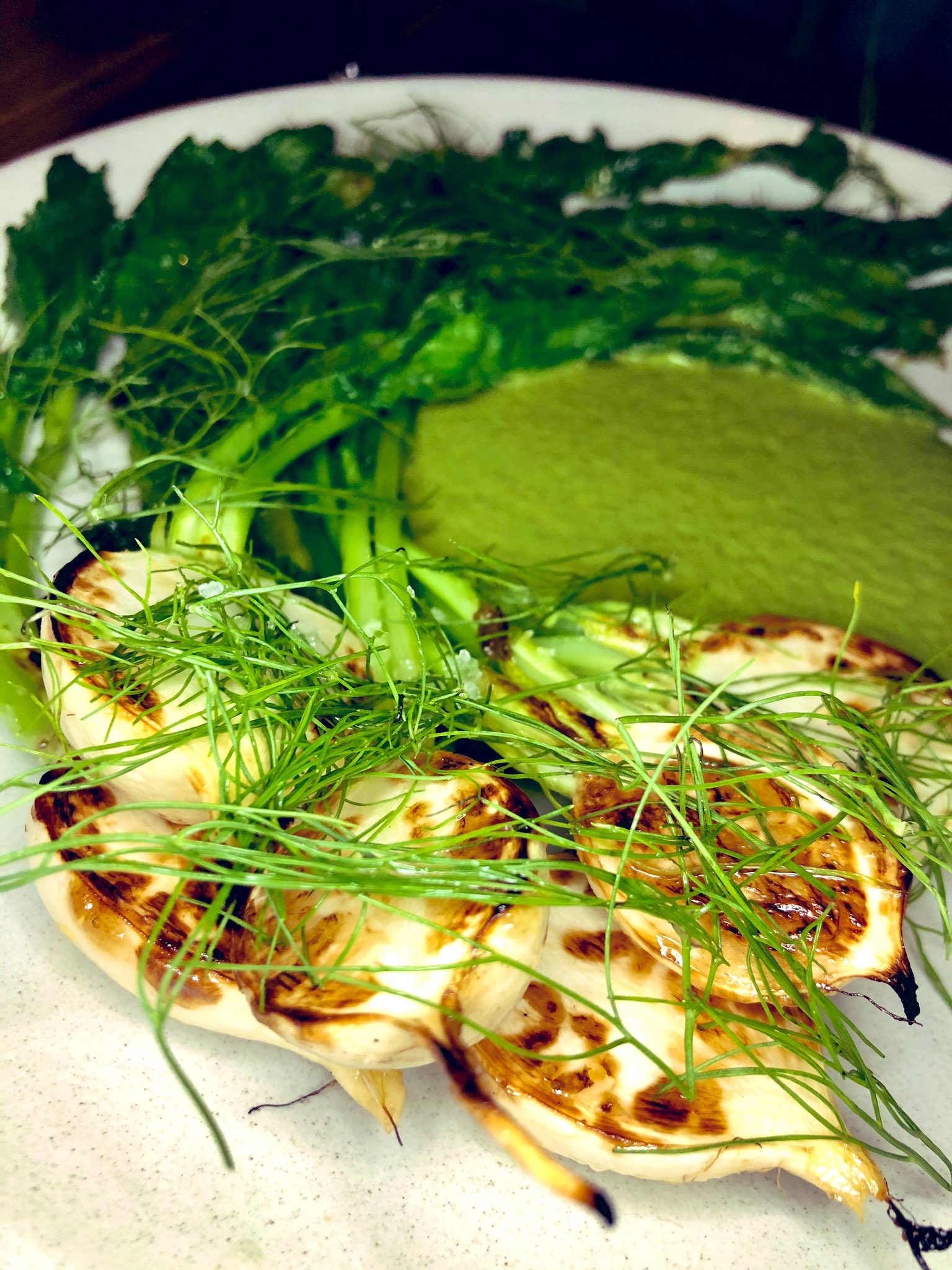 (You won’t turnip your nose at these)
(You won’t turnip your nose at these)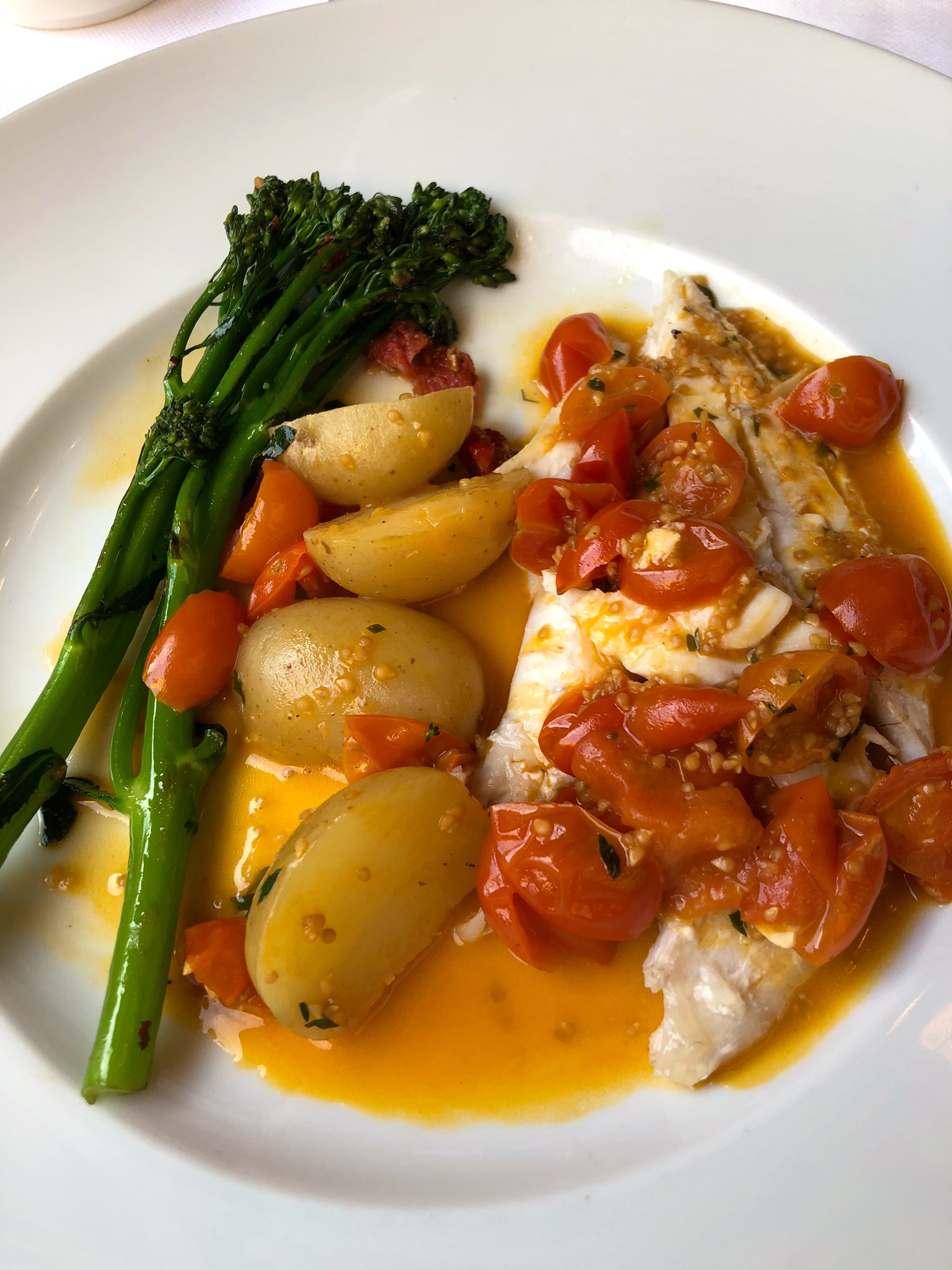 (John Dory at Costa di Mare)
(John Dory at Costa di Mare)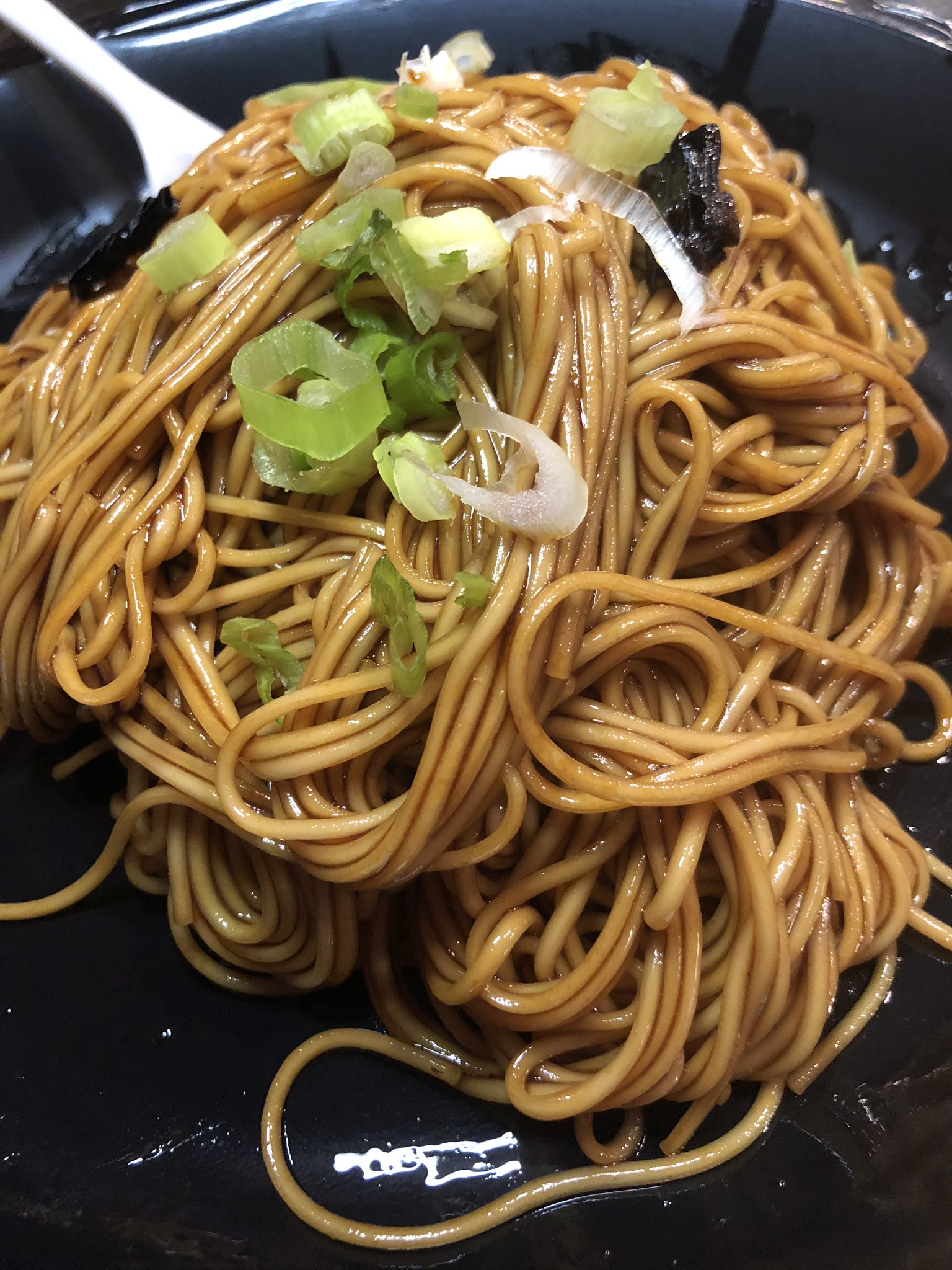
 (Keep calm and carrot on at ELIO)
(Keep calm and carrot on at ELIO)


